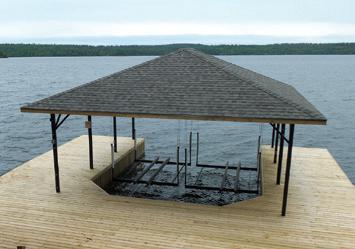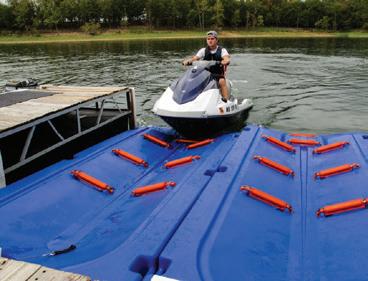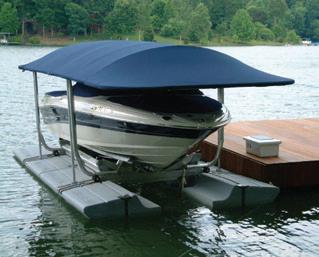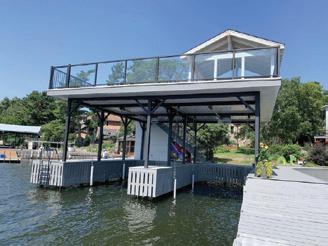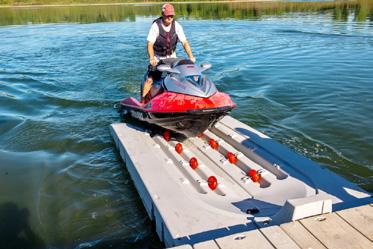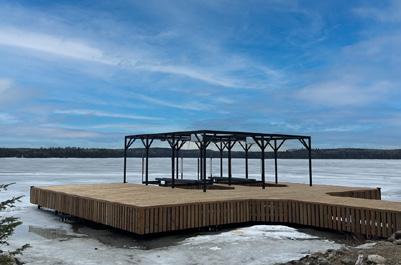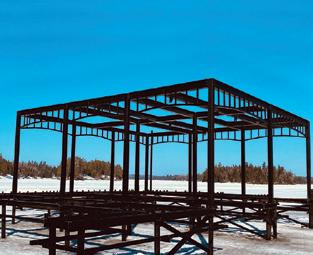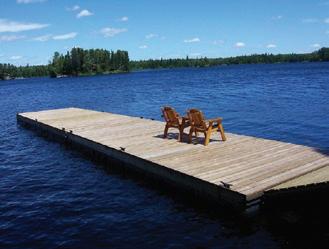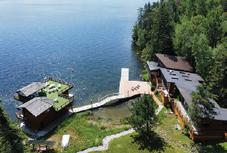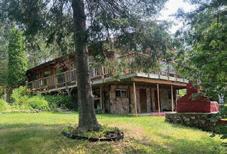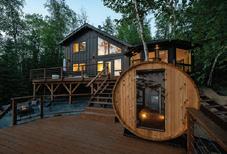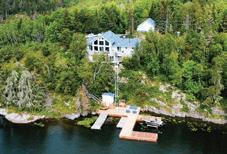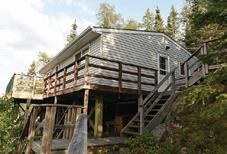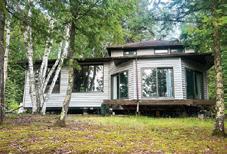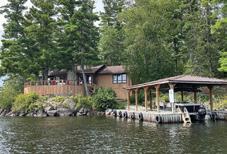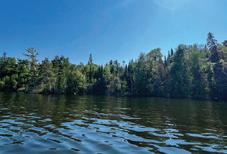







3 LOWDSA
President's Message 3
Executive Director’s Note 4
Our Contributors 5
LakeSmart 2024 recap: A season of engagement and education 7
Government notes 11
Growing together for a sustainable future 12 14 In the District
Water levels: Continuing effects of a changing climate 14
Kenora's commitment to sustainability: advancing the action plan 15
All together now for a sustainable future by Jacob Boutwell
Environment
LOWWSF: Protecting the Rainy – Lake of the Woods watershed from aquatic invasive species 27
IISD-ELA: How mucus sampling saves fish 31
Treading wisely: Make your travel plans more sustainable 42
Member recipe: Beautiful bountiful borscht 45
You've got a lot of gall! by Jacob Rodenburg & Drew Monkman





It is hard to imagine that our beautiful lake life summer has slowly slipped into the fall season. We, at LOWDSA, are once again, proud of our LakeSmart team’s accomplishments. There are not many more effective environmental programs than the services provided by our team. Please refer to their report in this issue. We are sure you will agree that their work has been impressive.
As presented in previous President’s Messages, the Lake of the Woods District Stewardship Association is undergoing significant changes in how we communicate and deliver services to our membership. Throughout the summer, we have been working with Wake Marketing (publishers of the Area News) in building a contemporary website. Additionally, we are implementing a new membership database called Memberpress. These transitions are both challenging and time consuming, and we have taken great precautions to ensure a smooth transition. Our goal is to have both projects up and running later this fall. We hope you will like our new image.
The cost of these important changes, combined with the impact of inflation, has necessitated an increase in our membership fee to $80. Currently, our finances are running at “break even” in which membership fees comprise about 40 per cent of our total

revenue (see accompanying graph). The remainder comes from a variety of environmental grants and donations. This diversity provides stabilization to our numerous programs while helping to keep membership fees down.
As we say goodbye to summer, we also have to say goodbye and thank you to Mimi Mastromatteo, Cass Wagenaar, Ashley Vogrig and Aneira Olson of our LakeSmart team. Your service to members and contributions to the health and well-being of the Lake of the Woods area has been exemplary. We wish you every success as you continue in your post-secondary education programs. Hopefully, you will return next year to help with another great LakeSmart season.
Additionally, Alena Collier, our Assistant Executive Director, has accepted a new opportunity, and has left us to follow a new career path. Alena joined us in January of 2022 when she relocated from Winnipeg to Kenora to take on membership and communication duties. Her skill and commitment were immediately evident as she went above and beyond to help make LOWDSA the great association it is today. Although we will miss her, we would like to thank Alena for her professional contributions, and we wish her the greatest success in her future endeavours.
We hope you have had a great summer and are honoured to have shared it with you. Thank you for your continued support! Enjoy this edition of the Area News.

BRIE MCCARDLE

As summer slowly fades away, the vibrant energy of the season gives way to the calm embrace of fall. The transition from the hustle and bustle of summer to the more serene days of autumn mirrors the changing of the seasons. Summer, with its long days and endless activities, seems to rush by in a whirlwind of excitement, while fall invites us to slow down, reflect and savour moments as they unfold. I am so excited to do just that.
In the LOWDSA world, we have bid farewell to our lovely LakeSmart team. This year we had four amazing ladies, including three university students and one high school graduate, all eager to make a mark —or should I say prevent marks to the Lake of the Woods region. Mimi Mastromatteo was in the lead role, and she rocked it. Her organization and communication skills plus her willingness to take initiative was inspiring. So much so, that we are thrilled to announce she will be staying with us to handle our media. Cass, Ashley and Aneira, complemented each other so well. This ‘A team’ sincerely cares about what they are doing. Aneira's love for wildlife is motivating and impactful. Ashley’s knowledge of the lake and her technical writing skills make her an asset for the educational aspect. Cass’s enthusiasm for stewardship is remarkable and her bubbly personality was a wonderful bonus to our members. Thank you, it has been a pleasure working with you.
LOWDSA’s Assistant Executive Director, Alena Collier, has moved on as well. Alena had an excellent opportunity for career and personal development, and we are so proud of her
for taking the leap. Alena was the friendly voice you've all been talking to on the phone, the photographer, media wizard, event and meeting coordinator and so much more. Saying goodbye and expressing gratitude to a colleague and more than that, friend, carries a mix of emotions. The blend of professional collaboration and personal connection we’ve shared makes this farewell truly heartfelt. I know Alena will do great, and I cannot wait to hear about it all!
The change of staff brings fresh perspectives and ideas, creating an exciting possibility for the Association. The farewell to friends is bittersweet, but I have no doubt LOWDSA will continue to grow, excel and deliver on its mission.
As we close out this fall edition, it’s a period of transition and contemplation. For gardening enthusiasts, this marks the optimal moment to relish the final yields—from the Matiowski Farmers’ Market or your own plot—and ready the gardens for the coming months. For soup enthusiasts like me, the excitement of gathering the gardens bounty is here. If that excites you too, I have the best borscht recipe for you later in this issue.
I hope everyone had an amazing summer and is still soaking up the warm sunshine during the day. If you have any favourite summer memories, we would love to hear your stories.
Happy fall,

PUBLISHED BY
Wake Marketing Inc., 140 Main St. S., Kenora, ON P9N 1S9
Publisher: Mike Greaves, mike@areanewsmagazine.ca
Editor: Leanne Fournier, editor@areanewsmagazine.ca
Art Director: Shayla Smith, shayla@wakemarketing.ca
Design & Layout: Mike Newton, Ashley Pereira
Advertising: Deb Polakoff, deb@areanewsmagazine.ca
The Lake of the Woods area and LOWDSA’s activities take place in the territory of the Anishinaabe Nation in Treaty #3 and the traditional homelands of the Métis Nation of Ontario. The beautiful lakes, shorelines, and environment that we enjoy should be respected for their cultural significance and history.
DISTRIBUTION & MEMBERSHIP
Lake of the Woods Area News is published five times per year and is mailed to LOWDSA members. To receive Area News visit lowdsa.com and become a member today. TOLL-FREE 1-888-265-9784 PHONE (807) 468-8715
Publication mail agreement #43107013. Printed in Canada.
© 2024 LOWDSA. All rights reserved. The contents of this publication may not be reproduced by any means, in whole or in part, without prior written consent. Statements of fact or opinion are the responsibility of the author and may not represent the view of LOWDSA or Wake Marketing Inc.

Lauren Hayhurst is a Fisheries Research Biologist II at IISD-ELA. Her areas of expertise include water quality sampling, fish population estimation, environmental studies, direct mercury analysis, and bioenergetics modelling.


As a biologist with IISD Experimental Lakes Area's fish crew, Lee Hrenchuk's research focuses on monitoring and assessing the effects of a variety of environmental perturbations (including mercury deposition, cage aquaculture, endocrine disrupting chemicals, eutrophication and climate change) on fish ecology and behaviour in small, oligotrophic lakes in the boreal shield.

In addition to a B.Ed., Robert Creedon has degrees in Criminal Justice, Sociology, and Fire Science. He has served as a volunteer firefighter and fire educator for over a decade, including four years as Minaki fire chief when not doing his full-time job teaching at Wabaseemoong Independent Nations (Whitedog). He currently lives in Minaki, Ontario.
Michael Fournier has over 30 years’ experience in home and cottage maintenance. What started out as a necessity, acquiring the skills to get his own home and cottage projects done to his high standards, has turned into a passion for doing the same for others. Through imagination, and a fierce commitment to leaving a small footprint, Mike is an all-star re-purposer always looking to re-use materials and family “treasures” that still have some life in them. When not on a ladder, he’s usually casting a fishing line somewhere on the Winnipeg River.
PRESIDENT: Garth Collier, Schnarr Lake
PAST PRESIDENT: Christine Semenchuk, Bigstone Bay
TREASURERS:
Carley Fyke, Welcome Channel; Jeff Rempel, Pine Portage Bay
CHAIR, MEMBERSHIP: Wanda Kabel, Sammons Bay
CHAIR, GOVERNMENT AFFAIRS: Don Parfitt, Winnipeg River
CHAIR, ENVIRONMENT: Adam Blake, Corkscrew Island
DIRECTORS AT LARGE: Sean Campbell, Woodchuck Bay
Martha Mankewich, Nanton Island
Bob Stewart, Longbow Lake
Trevor Templeton, Minaki
EXECUTIVE DIRECTOR: Brie McCardle, (807) 468-8715 executivedirector@lowdsa.com
P.O. Box 1160
Jacob Boutwell
Alena Collier
Federation of Ontario Cottager’s Association
Leanne Fournier
Sharon Gurney
Connie Larson
Brie McCardle
Drew Monkman
Lori Nelson
Teika Newton
Jeff Polakoff
Jacob Rodenburg
Kenora, ON P9N 3X7
EMAIL: info@lowdsa.com
TOLL-FREE: 1-888-265-9784
PHONE: (807) 468-8715
M N LOWDSAssoc
P S LOWDSA V Lake of the Woods District Stewardship Association
Our Fall Photo Contest Winner is Sharon Gurney of Granite Lake who writes this of her photo “Falling” in love with autumn: Fall is a precious time of year in cottage country. Life slows down while maple trees come to life along the shoreline. I captured this photo while out kayaking on Granite Lake.
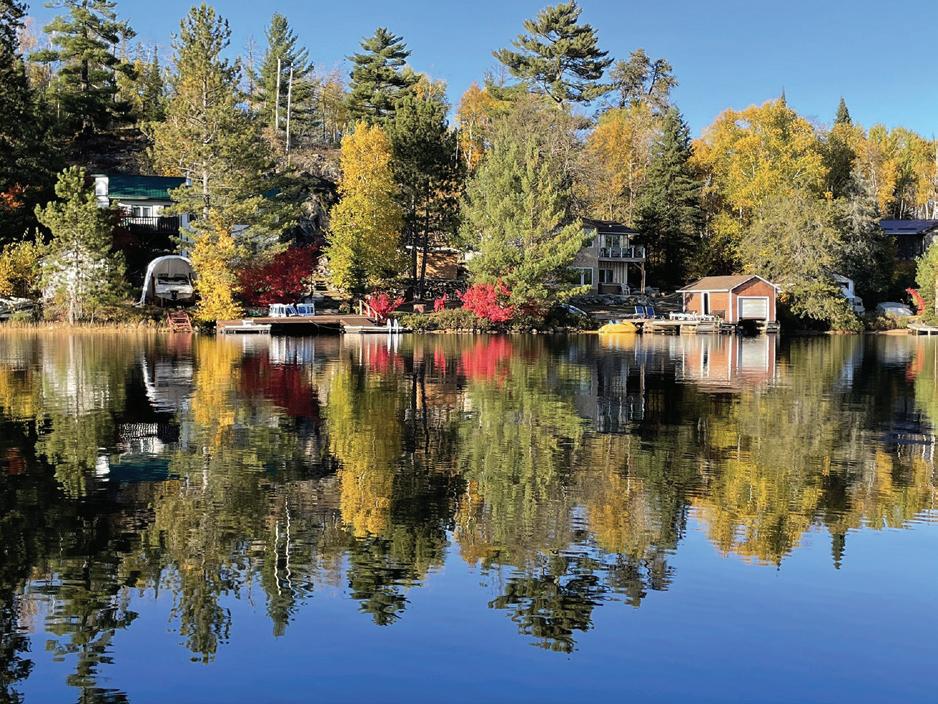
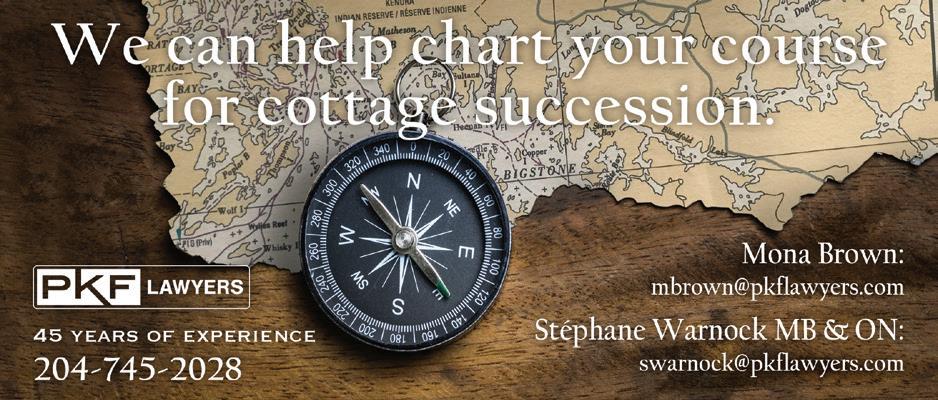

With the arrival of summer at Lake of the Woods, the LakeSmart team commenced their mission of environmental education and community engagement. This season, marked by a series of impactful events, showcased the dedication and passion of the LakeSmart team in promoting sustainable practices and fostering a deeper understanding of lake stewardship among community members.
Kicking off the season, the LakeSmart team organized Seedling Days in Sioux Narrows, Clearwater Bay, and Longbow Lake. This initiative aimed to reforest areas around Lake of the Woods and educate the public on the importance of native tree species for ecological balance. The events were highly successful, marked by enthusiastic participation and positive community feedback.
Education is central to LakeSmart’s mission, and this season, the team visited various schools, delivering bilingual presentations (French and English) to students of all ages. Covering topics such as lake health, invasive species, renewable energy, biodiversity, and the water cycle, they engaged students with interactive activities like bug hunts and crafts. A notable highlight was the use of renewable energy models in elementary school visits, providing clear visual understanding of mechanical energy. This year's main goal for LakeSmart’s educational programming was to emphasize high school outreach, aiming to inspire and recruit future environmental science students. The team extended their efforts into the summer by regularly visiting multiple kids' camps, reaching four individual camps with nearly 20 visits in total.
Recognizing the importance of clean shorelines for lake health, the LakeSmart team organized multiple cleanup events, bringing together co-op students and community volunteers. They broke a record by collecting 160 lbs. of waste during the first cleanup at the Harbourfront. The final cleanup of the season, in partnership with the environmental committee, was also notably successful.
The weekly Matiowski Farmers’ Market at the Jarnel Pavilion was an excellent platform for the LakeSmart team to engage with the community. Every Wednesday, they set up an information booth, interacting with hundreds of visitors and sharing insights on lake preservation, invasive species management, and sustainable practices. New interactive activities, like an invasive species matching game, helped raise awareness and encourage involvement, with a record-breaking 300 people engaging on a single market day.

In partnership with the Northern Ontario Sport Fishing Centre in Sioux Narrows, LakeSmart hosted their first ever speaker series event, a significant highlight of the season. The team presented on lake and shoreline health, offering valuable insights to lakefront property owners on creating more environmentally friendly properties while increasing property value. Additionally, the team shared knowledge during the Experimental Lakes Area (ELA) tours, providing community members with unique insights into ongoing research and conservation efforts. These events underscored the importance of scientific research and community education in achieving long-term environmental sustainability.
This season, the team faced unforeseen challenges running our boat wash station aimed at reducing the spread of invasive species. Despite these issues, they managed to operate a few sessions at the Moncrief Construction Sports Centre. Recognizing the importance of this initiative, they prioritized educating the public on proper boat cleaning techniques to mitigate the spread of invasive species even when the station wasn't operational.
The "Dock Talks" program, a cornerstone of LakeSmart, connects the team with property owners and keeps them informed about lake conditions. Starting in mid-July, the team conducted these talks three days a week at properties on Lake of the Woods, distributing dock kits, and sharing shoreline maintenance tips. This season, specific topics of discussion included septic tank maintenance and erosion control.
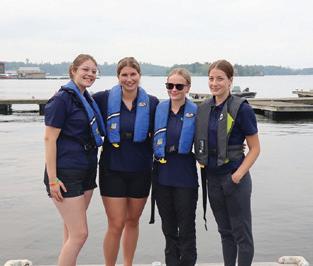
The season featured special events like Wheels and Deals, Party in the Park, and Kids KBI at the Jarnel Pavilion, where the LakeSmart team set up information booths and conducted educational games. The Metal Waste Day event further highlighted their commitment to sustainability by promoting proper metal waste disposal.
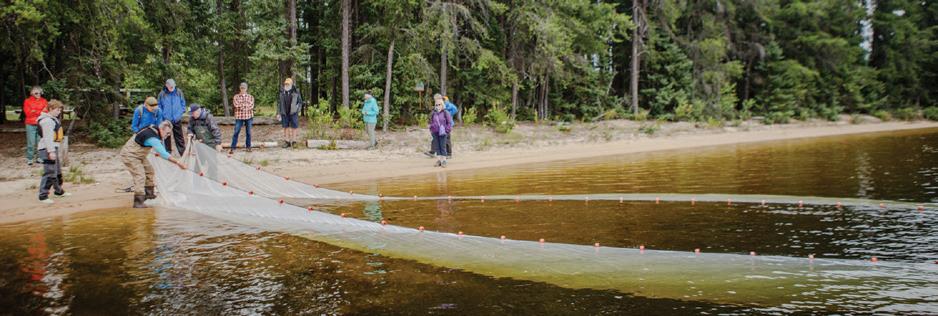
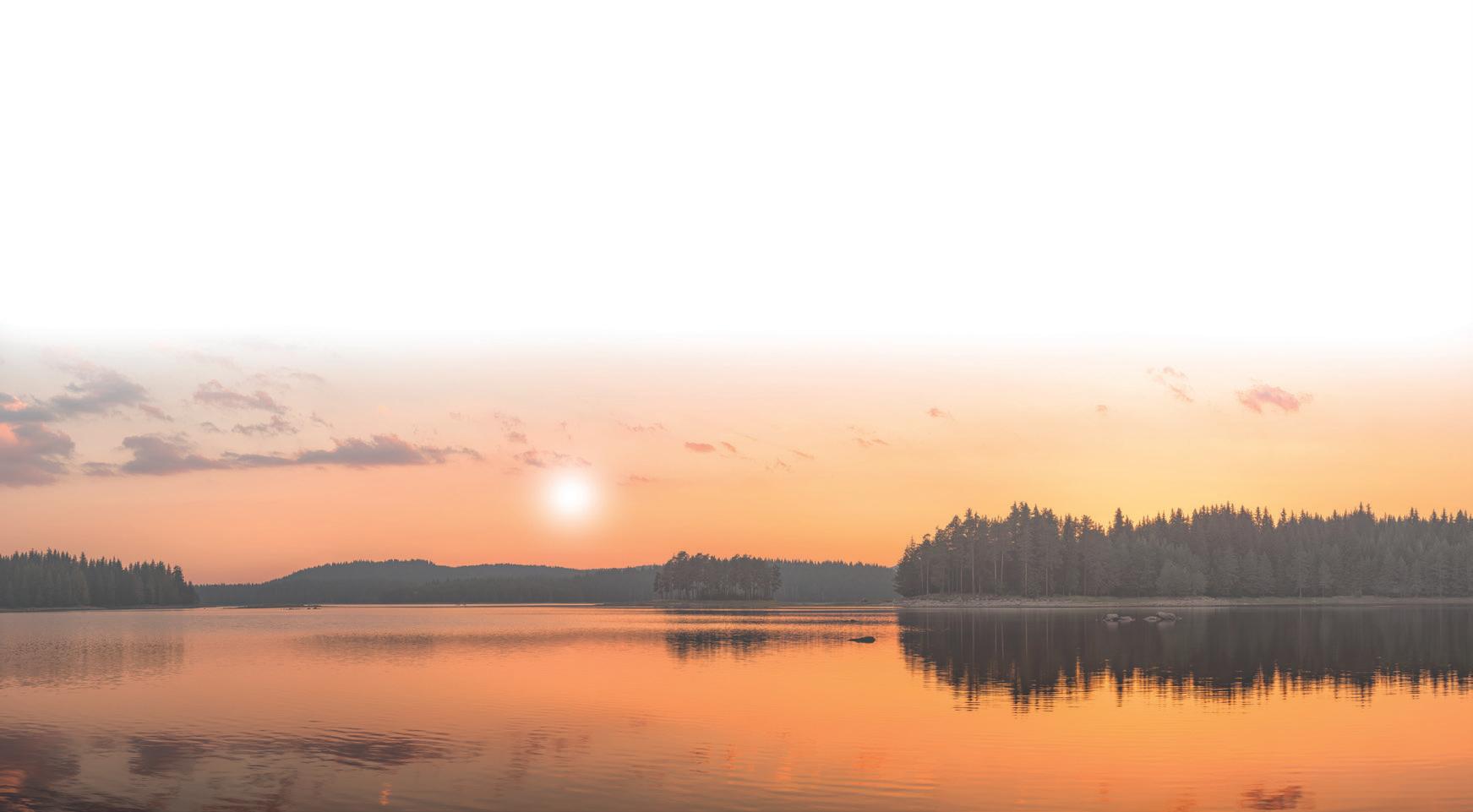

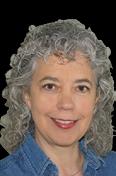
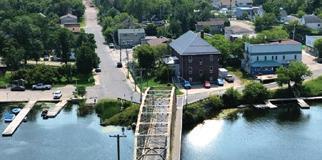




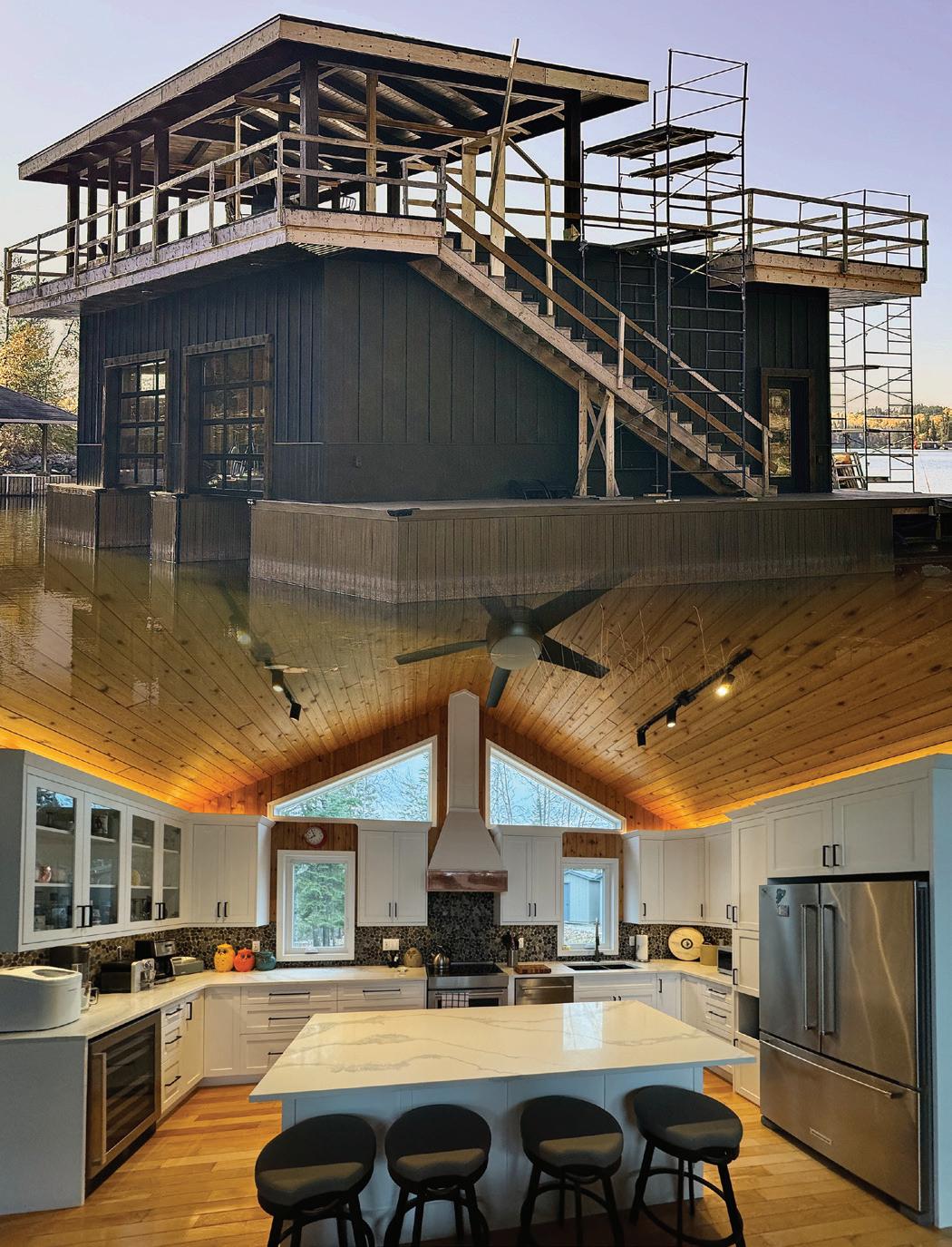
BY BRIE MCCARDLE
The Public Information Conference 2 took place on July 4 in Kenora. The Preliminary Design and Class Environmental Assessment Study for the 8.5 km long section of Highway 17 between Highway 673 and Rush Bay Road (referred to as Section 2) was presented. As a result of this study, four-laning options within Section 2 and their evaluations were available for observation. The preferred route, which is shown in the accompanying map, was presented. Please refer to the Highway 17 Twinning website 4lanehighway17Kenora.ca for additional information on the proposed strategies for intersections at Royal Lake and Moth Lake.
The Ministry has deemed, in consultation with Indigenous groups, that wildlife corridors are not necessary because there are no significant migratory routes through this section. However, culverts with flat bottoms will be installed to enable safe passage for small vulnerable species.
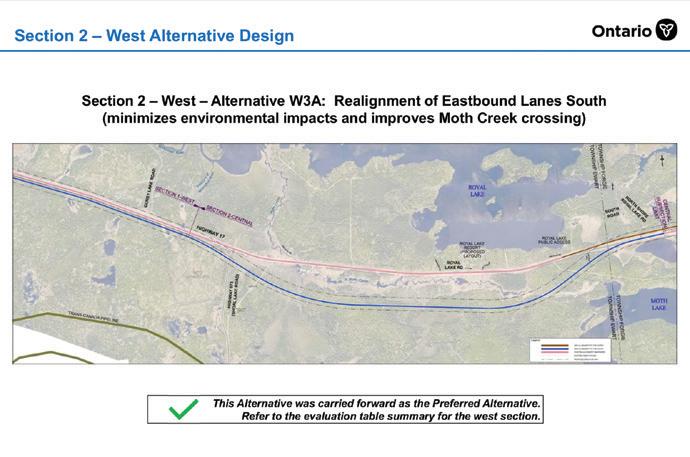
The two sites that are preferred by the Nuclear Waste Management Organization (NWMO) are Ignace and South Bruce near the South Bruce Peninsula between Lake Huron and the Georgian Bay. Recently, the Township of Ignace in Northwestern Ontario voted to express interest in hosting the deep geological repository for the storage of spent nuclear waste in the vicinity of the townsite. The NWMO will need to obtain consent from the Wabigoon Lake Ojibway Nation because the site is within their traditional territory, and the NWMO has respected principles of free, prior and informed consent as outlined in the United Nations Declaration on the Rights of Indigenous Peoples. Like Ignace, the First Nation will establish their own process to decide if they support the project. The Municipality of South Bruce will hold their referendum in October.
At the July 16 meeting of the Kenora Local Citizens Committee, a report on the Forestry Management Plan (FMP) covering 2012 to 2022 was made by representatives from Miisun foresters. The primary objective of the FMP is to ensure that biodiversity of the forest is enhanced or, at the very least, maintained.
The Local Citizens Committee consists of members from a wide range of interests. The following groups are represented: trappers, miners, Grand Council Treaty #3, Lake of the Woods District Stewardship Association, City of Kenora, FP Innovations, and various independent persons.
The Kenora Forest roughly covers the area west of the Winnipeg River all the way to the Manitoba border. The total average number of hectares harvested is 908.1. This represents approximately 24 per cent of the average annual harvest area which is split almost 50/50 between hardwood and softwood. It was pointed out that there are implications for not harvesting as much as planned i.e. loss of economic benefits, delay in achieving future forest conditions, and lowered level of new growth young forests that are usually created through harvesting. During this period, there were six significant fires totalling nearly 262,000 hectares. Also, there were a number of noncompliance issues presented with the main ones being incursion into unallocated stands in which a letter of warning was sent to the contract holders.
Look for additional information on the Ministry of Natural Resources website at nrip.mnr.gov.on.ca/s/fmp-online or by emailing kurt.pochaillo@miisun.ca. The Kenora Forestry Office can be contacted at 807-468-2501. an
BY ALENA COLLIER
LOWDSA’s commitment to preserving and enhancing the natural beauty and ecological health of the Lake of the Woods region remains unwavering. Since its beginnings, the organization has held strong ties to ensuring this precious environment remains a vibrant, thriving habitat for generations to come. Our achievements are a testament to the dedication of our members, whose support and passion fuel our mission.
However, to continue evolving and meeting the ever-growing challenges facing the district, we find it necessary to make an adjustment. This fall, we will be implementing an increase in our membership fees. This decision was not made lightly, and we want to assure you that it is essential for the continued success and expansion of our initiatives.
LOWDSA's efforts span a wide range of environmental and community-focused projects. Our initiatives include:
1. Invasive species prevention: We have invasive species prevention at the forefront of our summer LakeSmart programming as we are seeing the evolving risk of invasive species and the need for prevention and education on the matters.
2. Dock Talks: We engage with lake residents on best practices on all lakes and shorelines. Shoreline erosion being one of our highlighted topics, we provide insight on how to promote a healthy shoreline.
3. Education and outreach: Through workshops, webinars, and community events, we educate residents and visitors about the importance of environmental stewardship. Our programs aim to foster a deeper connection between people and nature. We also focus on children and youth education to gauge interest at a young age and connect with the future generations. This is important as these are the individuals who will take care of the environment in the future and pass on their knowledge of healthy lake life practices.
These activities require substantial resources—financial, human, and material. While our membership fees have always been a critical source of funding, they alone are insufficient to sustain our growing range of programs and services.
The decision to increase membership fees is driven by several factors:
• Rising operational costs: Like many organizations, we face increasing costs for everything from equipment and supplies to staffing and facilities. To maintain the quality and scope of our work, we need to ensure our financial health.
• Expanding programs: As environmental challenges evolve, so too must our response. We are constantly developing new programs and initiatives to address emerging issues, and these require additional funding.
• Investment in innovation: To stay ahead of environmental threats, we must invest in cutting-edge technology and research. This investment is crucial for developing effective conservation strategies.
We deeply appreciate the loyalty and support of our members. You are the backbone of LOWDSA, and your contributions have made our successes possible. We understand that a fee increase may be a burden for some, and we are committed to ensuring that every dollar you contribute is used efficiently and effectively.
With your support we are able to carry out our vision and mission to preserve the area for future generations to come.
While membership fees are crucial, they are not our sole source of funding. Membership fees only make up 40 per cent of LOWDSA revenue, leaving a large amount to be sourced elsewhere. We actively seek grants, corporate partnerships, and donations to support our work. These additional funds enable us to expand our impact and tackle larger projects that require significant investment.

Your continued support is vital. By renewing your membership at the new rate, you are directly contributing to the preservation and enhancement of the Lake of the Woods district. Together, we can ensure that this beautiful region remains a sanctuary for wildlife and a treasured destination for people.
Thank you for standing with us. We look forward to growing and thriving together, continuing our journey toward a sustainable future. an
Your continued support of LOWDSA's programs and initiatives does make a difference.
Member Name: LOGIN EMAIL:
Alternate Email: Address:
Home Phone:
Cottage Phone:
Mobile Phone:
m YES, send my renewal notice by email
Use your smartphone camera app to scan this QR code and renew your LOWDSA membership online.

You can also contribute to our EISP Fund, purchase pine seedlings, and order gift memberships while you’re there!
Renew by phone: 807-468-8715 or 1-888-265-9784
Renew Your Membership
Renew by email: membership@lowdsa.com Membership Renewal Renew online, or use this form to renew by mail or email.
You can choose between a Full Membership (magazine mailed) or a Virtual Membership (digital magazine).
»
|
Kenora: May 18, 2024 10am - 1pm
Sioux Narrows: May 24, 2024 10am - 1pm
Help reduce our carbon footprint while expanding your own patch of forest. Please order your seedlings by May 5, 2024.
m Clearwater Bay (Firehall) m Storm Bay Rd. (Firehall) # of bundles (of 15) __________ at $15 each
A donation of $5 from each member would support an entire LakeSmart position and contribute to LOWDSA’s mobile boat wash station! Contributions to the EISP Fund can be made online any time at lowdsa.com/campaigns/eisp.
m $250 m $100 m $50 m $25
m Other $_____________________________
TOTAL $
To purchase multiple gift memberships, please attach each individual’s contact information to this contact form.
m Full Membership, $60 m Virtual Membership, $52
Recipient’s Name: _______________________________
Recipient’s Email: _______________________________
Recipient’s Address: ______________________________
m Please send give card with message:
TOTAL $ GRAND TOTAL $
Payment Options
» Cheque payable to LOWDSA or call 1-888-265-9784
» Pay by credit card:
(mm/yy) CVC# _______
BY JEFF POLAKOFF, LOWDSA REPRESENTATIVE, LAKE OF THE WOODS CONTROL BOARD
Water level and lake conditions during the summer of 2024 continued to reflect the challenges and unpredictable nature of life at the lake in Northwestern Ontario as we contend with and become accustomed to the effects of a changing climate. From the drought conditions of 2021 to the historic flood event of 2022 and a return to extended drought of 2023, this past summer once again gave evidence of ongoing and evolving climate change in the Winnipeg River basin.
An extremely dry and warm winter with low snowpack was followed by average early spring precipitation with low normal inflows to Lake of the Woods in April and early May when conditions and water levels began to stabilize. Beginning in mid-May and continuing into June however the basin began to experience frequent heavy precipitation events. Rainfall covered a large area and was particularly heavy in the Rainy and Namakan lakes area south of Lake of the Woods. These lakes are the main source of inflow to the lake and as we learned in 2022, have a big impact on our water levels.
During the month of June, the headwaters of the Rainy-Namakan (R-N) basin received the highest amount of rainfall experienced in the last 30 years resulting in sustained high normal flows and local flooding within the basin. With continuing high levels of precipitation, the Norman Dam, which is the primary outlet for Lake of the Woods, was fully opened at the end of June. The sustained rainfall and limited outflow capacity through the dam resulted in the Lake and Winnipeg River continuing to rise. On July 2, the Lake of the Woods and the R-N basin received precipitation ranging from approximately 40 to 75 mm (1.6 –3.0 inches). Levels rose until the second week of July when the lake level stabilized at approximately 323.35 m (1060.86 ft). This level was high normal for the time of year and above the preferred (LOWDSA) summer range of 322.8 m to 323.0 m (1059.0 to 1059.7 ft). Levels on the Winnipeg River were also very high and well above normal.
As I write this article in the third week of August, the level of Lake of the Woods has decreased steadily since it’s peak in July and was 323.08 m (1059.9 ft). As we head into fall the Control Board

strategy is to continue a gradual decline of Lake of the Woods outflow to the Winnipeg River in preparation for freeze up. Water levels and weather will be monitored closely during this period and outflow adjustments made as necessary as we prepare for the winter regulation strategy in October.
Extreme weather events including precipitation, drought, increased evaporation and seasonal changes effect water levels and flows. The Control Board is working to improve our understanding of the impacts of these events and increasing collaborations with basin partners including the International Rainy / Lake of the Woods Watershed Board (IRLWWB), which regulates levels on Namakan and Rainy Lakes, as well as water quality in these lakes and Lake of the Woods. Climate change adaptation is an increasing focus of our collaborative approach with agencies, communities, resource regulators and other partners in both Canada and the U.S.
While we can’t control the climate, we can certainly learn more, share information and work together to adapt to its escalating effects.
For up-to-date information on water levels and the work of the Lake of the Woods Control Board please visit at lwcb.ca. an
This summer, the City of Kenora’s Sustainability Advisory Committee continued to meet and ensured the work laid out in the Sustainability Action Plan was being put into action.
The vision of the Plan is for the Committee to work together to deliver local projects that will contribute to a better quality of life for the community while also building pathways that respects reconciliation, are climate-positive actions, and protect the land and water that sustain our beautiful community.
The Sustainability Action Plan is community-based and actionoriented. It outlines 14 sustainability projects that are to be completed between 2022 to 2031. The intent of the Plan is to provide guidance for local projects that aim to reduce damage, risks and vulnerability due to climate change and grow green initiatives within Kenora.
These sustainability projects fall into four categories. These are examples of some initiatives within the Plan’s categories:
• Energy conservation: building on the Community Energy Plan, retrofitting buildings to reduce energy use




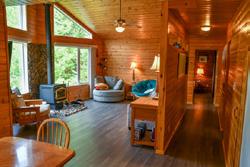

• Green infrastructure and sustainable transit: affordable, energy efficient public transportation that meets the needs of the community
• Local food production and waste reduction: supporting annual freecycle and hazardous material days, expanding micro-farming and community gardening, promoting local household composting
• Water stewardship: providing bottle filling stations, supporting healthy shorelines
The Committee is made up of members that represent various sectors and City staff. Current members are Ashley Nordlund, Craig Debbo, Rory McMillan, Ethan Amyotte, Lisa Devlin, Peter Kirby, Stephanie Charles, Kim Mowrey, Brie McCardle, and Councillor Lisa Moncrief.


We are looking for members to join the Committee. To ensure we have a broad range of perspectives and lived experiences contributing to this important work, we are encouraging members of local Indigenous communities, local youth, those with educational backgrounds, and local business owners to apply to be representatives on the Committee. Committee applications are available on the City of Kenora’s website (kenora.ca), in person at City Hall, or email Kelly Galbraith, Deputy Clerk, at kgalbraith@kenora.ca if you have questions.
For more information about the Sustainability Advisory Committee and the Sustainability Action Plan, visit kenora.ca or scan the QR code. an

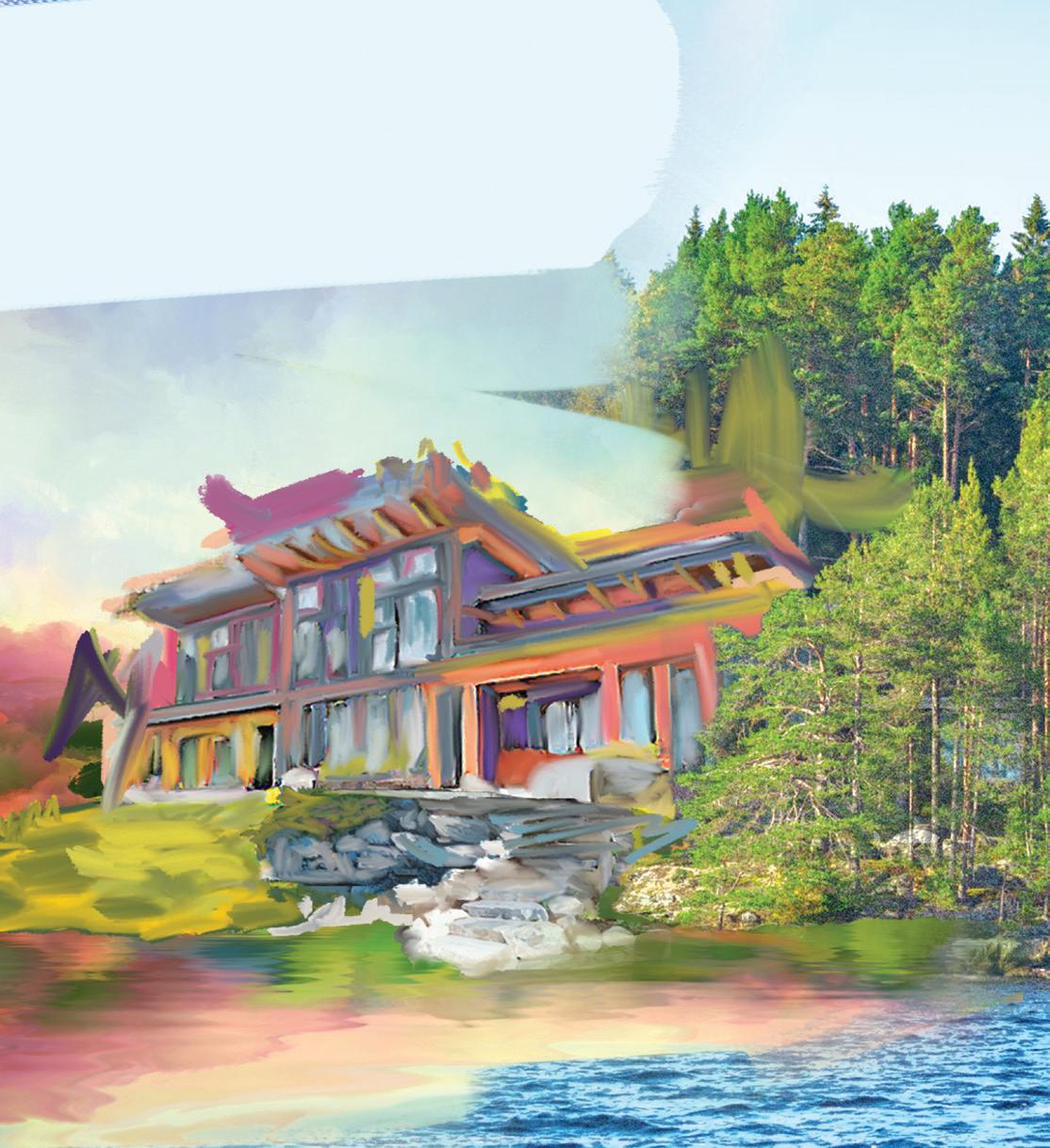
by Jacob Boutwell
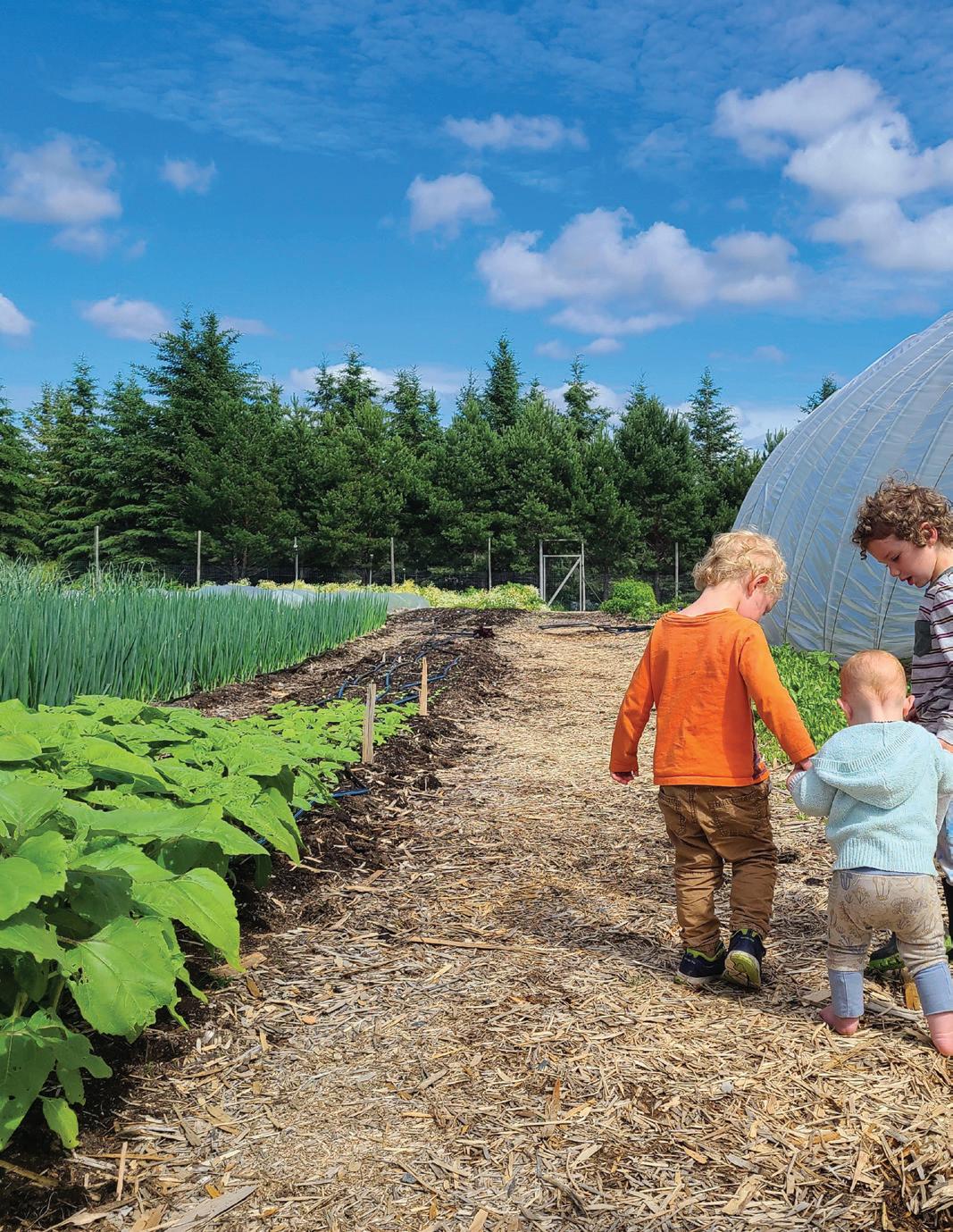
This article will be coming out in the fall, but as I write this it is the peak of summer, and life on the farm is busy busy busy. As you may recall, I am one of three farmer-owners of Muriel Shores Farm. Writing this article series so far has been an exercise for me in how we can think about a sustainable future, by looking through the lens of story and relationship. In this article I want to use these lenses to look into a future that I want to see, and maybe you do too.
I can think of no better place to start than our farm, where we try to show that a more beautiful world is possible. I love when customers come to visit and marvel at our bountiful rows of vegetables and flowers, and just this past week we had a group of youth come and work for a day as a part of a summer program. After a day of hard labour in the hot sun, I thought they would want to get as far away as they could from our farm, but with genuine smiles on their faces they told us how much fun they had and how it was a highlight of their summer.

I appreciate these opportunities to reflect on how lucky I am. I get to spend my days with my hands in the dirt, connecting with the plants and the earth that they grow from. While I do this, I get to spend time with wonderful people, who I share a deep connection and interdependence with. When the work and weather allows it, my one-year-old daughter joins me up at the farm, and gets joyfully filthy while I harvest the days fresh vegetables, which will end up on the tables and in the bellies of people in my community. This feeling of having a place and a purpose within my community and within my ecosystem is what I want more of in my future, and this is what I want for everyone.
When I think about a sustainable future, one of the things I contemplate is local economy. When we go to the Farmers Market every Wednesday, it is a vibrant space. Beautiful ceramics, local art, dazzling jewelry, tasty treats, and of course, fresh healthy local produce and meats. It’s not that I suggest we reject global economy all together. There are many important components of our farm that come from far away, but I think that the more we lean into local and regional economy, the more we are leaning into quality, into meaningful vocations where people get to live their passions. This also include more accountability in terms of environmental impact and worker treatment.
Local economy also has the potential to be resilient in the face of crises in a way that our larger economies don’t. Local economies keep more money in a community, cycling around and benefiting many people, rather than cycling in and quickly cycling out. In the example of our farm, practicing local economy is a way to mitigate climate change (fewer carbon emissions and biodiverse ecosystems) and to prepare for potential future crises (having a local food supply) while making a more beautiful world right NOW (healthier food, people, and ecosystems and connected community).
When I think about a sustainable future, I also think about the children that will inherit this world, a world that will come with a whole lot of baggage that they didn’t ask for. How are they going to navigate increasing forest fires, unpredictable weather, and volatile global events?
More than anything, I think they are going to need to know how to share, collaborate, and work together. This is the way nature works. We often hear of survival of the fittest, which can often be misinterpreted as survival of the strongest. When observing an ecosystem, it is the organisms that “fit” into their place in a community of plants, animal, and insects that thrive.
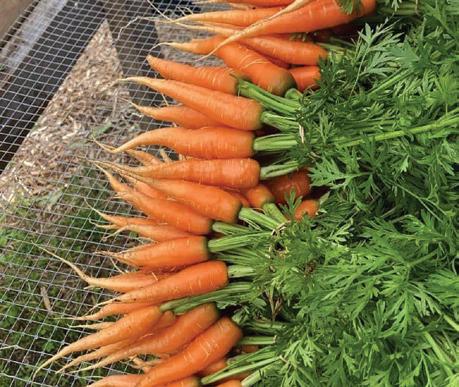
To raise thriving humans, I believe we should be nurturing our children not to be the best at a school subject or at a sport, but how to be the best version of themselves that can find where their place is to thrive in this world, and to help others thrive as well. I’d like to quote Khalil Gibran, who wrote a wonderful book called “The Prophet”, and if you haven’t read it, I strongly encourage you to do so. He writes:
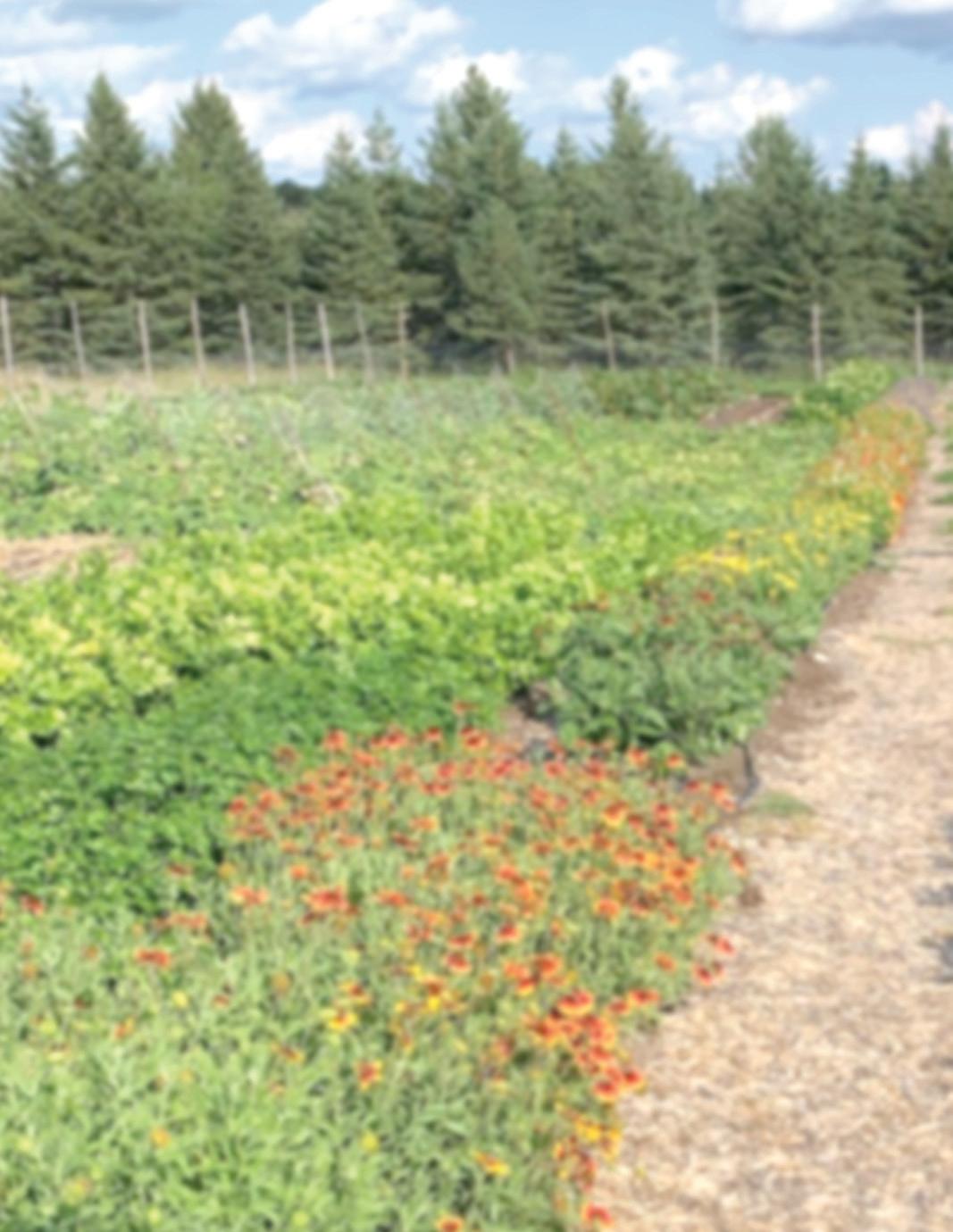

“Your children are not your children. They are the sons and daughters of Life’s longing for itself.
They come through you but are not from you,
And though they are with you yet they belong not to you.
You may give them your love but not your thoughts,
For they have their own thoughts.
You may house their bodies but not their souls,
For their souls dwell in the house of tomorrow, which you cannot visit, not even in your dreams.
You may strive to be like them, but seek not to make them like you.
For life goes not backward nor tarries with yesterday.
You are the bows from which your children as living arrows are sent forth.
The archer sees the mark upon the path of the infinite, and He bends you with his might that His arrows may go swift and far.
Let your bending in the archer’s hand be for gladness;
For even as He loves the arrow that flies, so He loves also the bow that is stable.”

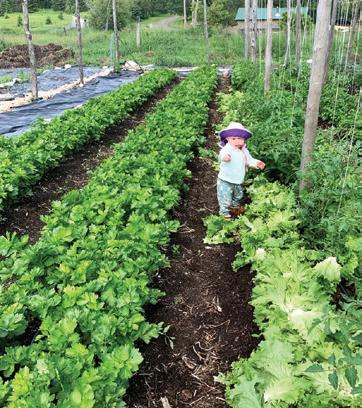
The future unfolds before us all at the same time, and each of our lives unfold with it. Together there are things we can do to affect the future, but it will unfold as it will, and we must accept that most of it is outside of our control. The best we can do is dream, and in our dreaming make today as beautiful as possible. an











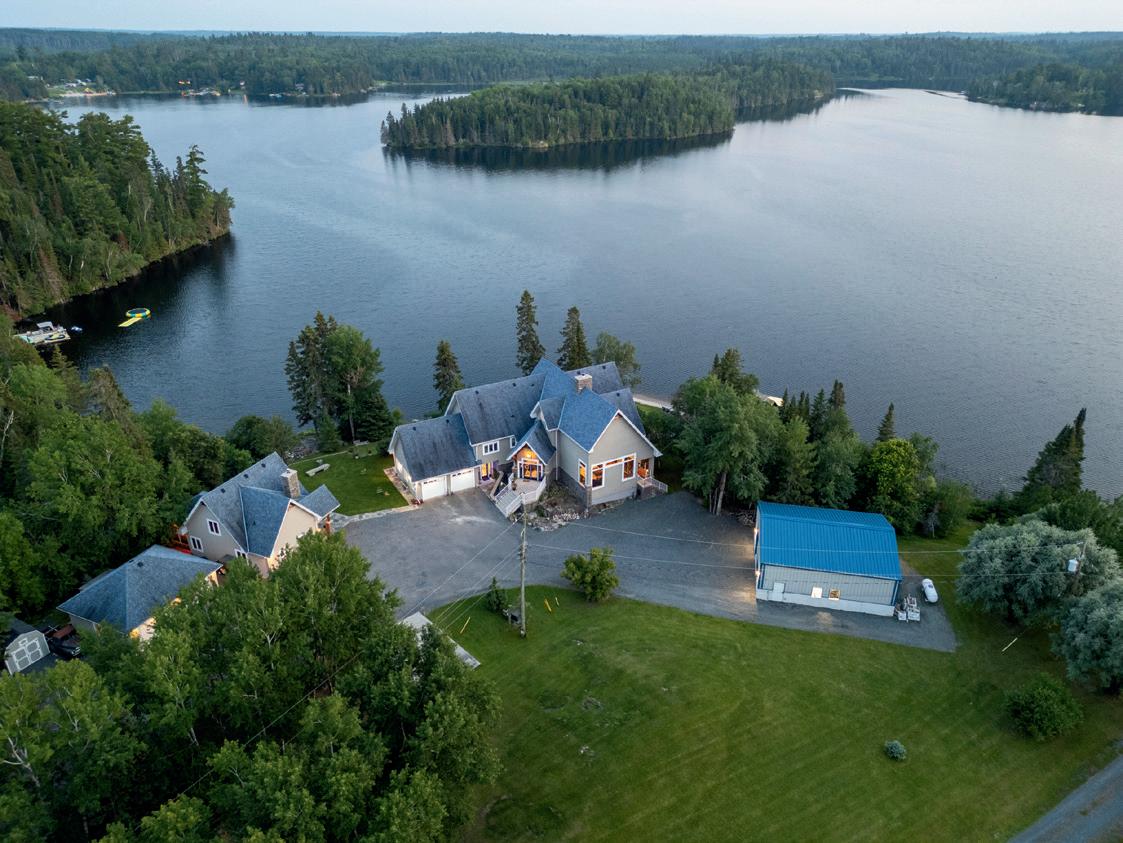
















$1,395,000 $629,900 $2,975,000



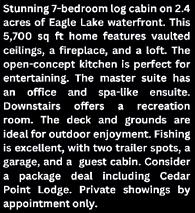

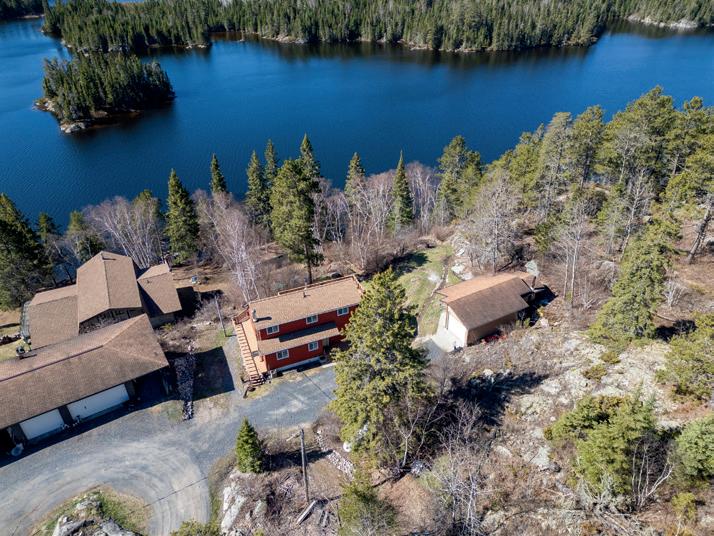







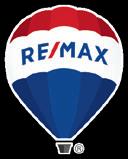





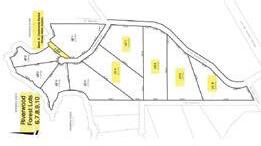


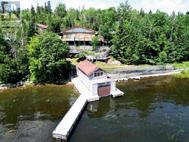




BY LEANNE FOURNIER
Whether you live in Kenora year-round or visit as a seasonal resident or tourist, you likely have a sense of the jewel our picturesque town is, nestled on the shores of Lake of the Woods.
Yet, there are people who no longer feel safe in our downtown, which is in sharp contrast to our beautiful surroundings. Kyle Attanasio, the City’s Chief Administrative Officer, points to some “galvanizing incidents” over the past few years that have heightened the city’s focus on creating a healthier, safer, and more inclusive environment for all who call this vibrant town home and choose to visit throughout the year.
“The City of Kenora is prioritizing the safety and well-being of our residents and visitors,” said Mayor Andrew Poirier. “Through initiatives like creating a Crime Prevention and Community Well-Being Advisory Committee, hiring the expertise of consultants, and the launch of the new Neighbourhood Empowerment Team (NET), we are fostering a community-driven approach to addressing safety concerns and empowering residents to be part of the solution working towards a safer and more vibrant community."
The Area News will be featuring a series of articles looking at these initiatives that together, play a role in creating a safer, more sustainable community for everyone.
Steve Woolrich is the Vice President of Crime Prevention Through Environmental Design (CPTED) Canada, and a certified CPTED expert. City Council supported the $30,000 residency project for Woolrich in the 2024 operating budget to better integrate the city’s efforts in health and safety, environmental design and planning.

With over three decades of crime prevention experience under his belt, Woolrich has already kick-started several successful initiatives across Western Canada, including Victoria, Kelowna, and Nanaimo in B.C., and Red Deer, Alberta to name a few. He is now in the process of putting the pieces in place to systematically change Kenora’s downtown.
In a media release about the residency, Attanasio said, “Our community is looking for leadership in community safety and well-being and the City intends to capitalize on Steve’s expertise through staff training and idea generation as well as his observations and recommendations. His insights will be critical in helping us chart our course forward toward a safer community.”
Woolrich offers kudos to the City for showing initiative and credits the hiring of Eric Shih, the new Community Safety and Well-Being Coordinator, as a key step in the right direction. “The staff in smaller municipalities are often pulled in so many directions and too often, issues around community safety and well-being are handled off the side of someone’s desk. Hiring Eric is huge.”
In addition to bringing a diverse perspective that includes time spent in policing, corrections and corporate security, Woolrich uses a “full-spectrum community safety and well-being approach” for his work. This includes blending industry best practices like crime prevention through environmental design, placemaking, and healthy built environment tools.
“CPTED is founded on the idea that thoughtful design and use of the built environment can lead to a reduction in the fear and incidence of crime and to an improvement in quality of life,” Woolrich said.
His work dovetails with that being done by Christiane Sadeler, of More Better Solutions, the consultant hired to lead the development of the Community Safety and Well-Being Plan, which is provincially mandated under the Community Safety and Policing Act (ontario.ca/laws/statute/19c01).
Kenora’s Neighbourhood Empowerment Team (NET) is comprised of City employees, law enforcement representatives and community members from a broad range of backgrounds.
“We are sharing a lot of the same data, and some of my findings working at the street level may help inform the final Plan that Christian is preparing,” said Woolrich. Woolrich and Sadeler’s projects are quite separate, but complementary, with Woolrich’s being focused more on space and people and Sadeler’s on people and social development and services.

Both will consider findings from a survey conducted by Sadeler earlier this year to assess the community’s perceptions of safety as well as to identify how people want to be involved in solutions.
The survey received a very high seven per cent response (normal is one or two per cent) with a whopping 87 per cent of respondents saying they are willing to “roll up their sleeves” and contribute to making Kenora safer.
“People have indicated a willingness to try something new, and this might be some bold ideas—things we haven’t tried before,” said Shih. Like Woolrich, he indicates that much of what we’re seeing in Kenora isn’t different than other communities across Canada. “Drug use, trauma, mental health concerns, crime, vandalism, and other issues, are increasingly common. We can look at what’s worked in other cities and keep our minds open to what could work here.”
He adds, “Kenora is for everybody. If we want a welcoming community, we need to understand that. We are working hard to make sure everyone’s voices are being heard in this process.”
Woolrich’s work has been focused on the downtown area as this is where the greatest concerns related to public safety have been identified.
“Ultimately what we’re trying to get to, is creating safer built environments, but also creating places where people just want to be. This is again, challenging for downtowns across the country with so many complex issues converging— crime, homelessness, addictions, and mental health,” said Woolrich.
He talks about first- and second-generation principles as the pathway forward. First generation CPTED principles look at physically built environments, while second generation principles consider social cohesion, connection, capacity and culture. “The key is how they’re all applied,” he said.
When they work together, communities can truly activate urban spaces in ways that will help reduce crime and increase the overall sense of safety.
“Placemaking” is what Woolrich describes as the fun part as it engages creative solutions and people. He has seen significant success in other cities where vagrant back allies and other troublesome locations were turned into welcoming gathering spaces through music and art. “The goal is to enliven spaces that were previously seen as unsafe by creating places where people can connect, and build trust and relationships,” Woolrich said.
“Some of the best placemakers are our artists and musicians who have created some of the most beautiful, vibrant public spaces in the world. When you can tap into that creativity, something truly transformative happens.”
This thinking is integral to two key components of Woolrich’s residency, which included a downtown assessment upon which his recommendations will be based, and establishing a cohort of City staff, police, and community volunteers who will be trained in the CPTED methodologies to maintain the momentum on this work well after his departure.
Kenora’s Neighbourhood Empowerment Team (NET), comprising 18 local participants including City staff, community members, and both an O.P.P. and Treaty #3 Police officer, was launched early in the summer. The team composition was carefully selected to ensure balanced representation. Shih co-leads the team with Karen McDonald, the City’s Bylaw Supervisor and Heather Pihulak, Director of Corporate Services, overseeing the initiative.
Attanasio sees one of the key roles of the NET to be to “activate residents.” This could include re-energizing pillar events that aren’t happening as much due to some of the concerns about downtown safety. “This is where NET can help augment having residents play a role in some of these activities. That includes having people as part of a vibrant downtown and giving them opportunities to be part of the change.”
The final recommendations from Woolrich’s work will be delivered to the city in the form of an ArcGIS Story Map. This expansive digital storytelling tool will provide a visual overview of all the data and action items being recommended. It’s very much like a website, allowing the user to scroll through information and explore various links to other interesting material.
According to Attanasio, this ultimately needs to be a “made in Kenora plan.”
He adds, “We haven’t been through an easy time as a community—amalgamation, mill closure, the pandemic, economic turmoil, etc. You can understand why the average Kenora resident isn’t jumping out of bed excited about community—but there are things happening now that could fundamentally transform our city.
“People are showing up in good faith. We just need to trust the process.”
Woolrich is confident that the Kenora effort will be successful. “The response I’ve had has been extraordinarily positive,” he said. He notes this isn’t always the case but as the survey results show, there’s many people from different sectors— business, residents, visitors, service providers, even first responder—who want to be part of the change.
“Businesses need to come together and collaborate more. I’ve seen success stories in other cities where businesses on a block have partnered to do cleanup. Property owners need to play a bigger role, by improving buildings in disrepair or vacant. If the appearance of a building is poor, that attracts graffiti, garbage, and vandalism. Everybody plays a part in this, no exception. People are always looking to police or the City to solve it all. Crime prevention is everybody’s business.”
Woolrich sees the key to success is people being prepared to get involved in the community on a whole different level. He points to the need for business owners to step outside and get to know their street neighbours and working with different local organizations around arts and music.
“We underestimate creativity. Some of these things are not expensive to do.”
Another opportunity lies in “designing out crime in new developments.” This is achieved in many other cities by embedding the various CPTED principles into land use guidelines and Official Community Plans. “Why build something that’s going to potentially generate crime? If you can design out these problematic elements, those issues can be reduced.”
Woolrich also talks about the importance of “social cohesion”. One of the ways he sees improving this in Kenora is for individuals and organizations to collaborate more, which will be a focus of the NET.
“Many communities struggle with their silos. NET is made up of individuals from different City departments and members of the community—so there’s a much broader range of people working together. Their role will be to go out and be the champions of this work and to spread it throughout the community, ultimately bringing







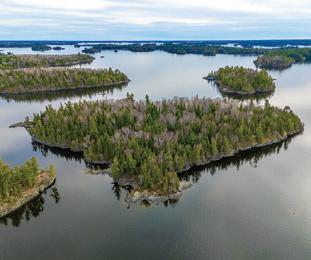


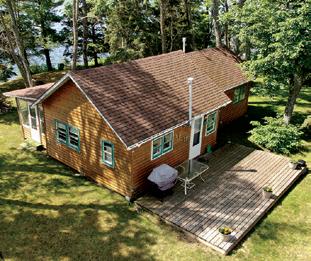
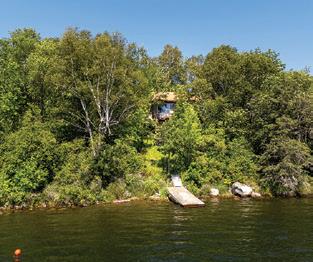
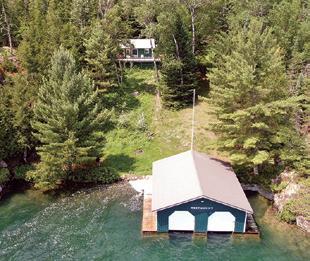

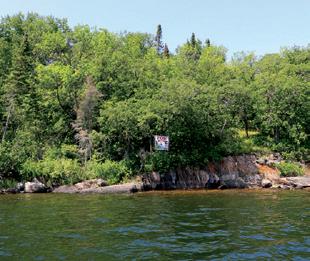





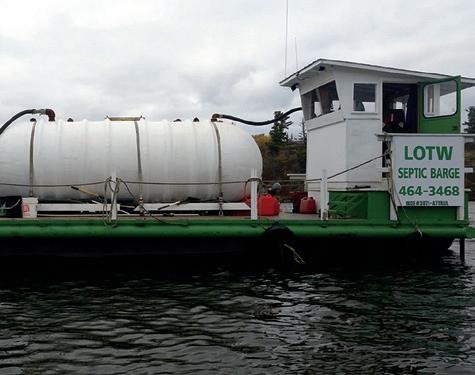



Put a plan in place. Ensure there's enough science and management expertise. Coordinate actions bi-nationally. That’s our mission.
BY TEIKA NEWTON, INTERNATIONAL WATERSHED COORDINATOR, LAKE OF THE WOODS WATER SUSTAINABILITY FOUNDATION
Lake of the Woods faces many ecological stressors. We’re all familiar with harmful algae that often fouls the water later in the summer, sometimes causing toxic blooms, but there are plenty of other threats to our lakes and streams. Aquatic invasive species (AIS), surface and groundwater contaminants, ecological disruptions like habitat loss, and the cross-cutting impacts of climate change are all causes for concern. As summer winds to a close and we start prepping to pull our boats and ready them for storage, now is a great time to be mindful not to give hitchhiking AIS a ride. Let’s learn more.
Who works on AIS? In short, lots of people, including personnel with government agencies, non-governmental organizations and concerned citizens.
Many of these groups work together through a subcommittee of the International Multi-Agency Arrangement (IMA)’s Technical Advisory Committee (TAC). The IMA is a consortium of many government resource agencies and groups, working on water management issues in the Rainy – Lake of the Woods watershed. The IMA includes government agency personnel, NGO members (like LOWDSA) and other experts from Minnesota, Manitoba, Ontario, Canada, the United States, and Indigenous nations who work with counties, communities, and local people to better understand and respond to challenges to our shared waters. The IMA-TAC includes field and technical personnel. In my International Watershed Coordinator role, I am the secretary to these groups.
The IMA-TAC AIS subcommittee meets each year in the late winter to review and assess existing or emerging invasive species threats and to develop communications campaigns and joint research or action projects. In May and June, you may have seen some of the information bulletins from this year, reproduced here, or on social media. Over the past few years, Brook Schryer from the Ontario Federation of Anglers and Hunters (OFAH) has prepared these shareable infographics for the AIS subcommittee, a task that will be picked up by LOWDSA next year.


This year, the AIS subcommittee is chaired by Nicole Kovar, an AIS specialist with the Minnesota Department of Natural Resources, an agency that maintains a robust AIS program. Visit the DNR’s AIS webpage (dnr.state.mn.us/invasives/ais/ index.html) to learn all about AIS, including which Minnesota waterways are infested, how to identify and report AIS, and most importantly, tips and tricks for reducing the spread of AIS. Even if you’re not a Minnesotan, the site is very useful for understanding
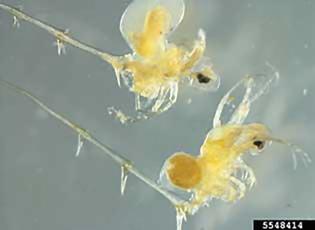
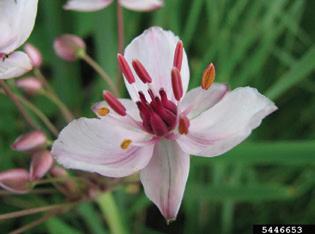


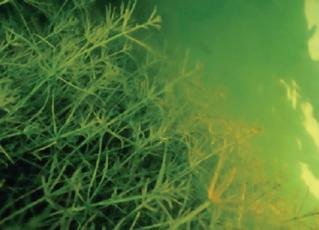
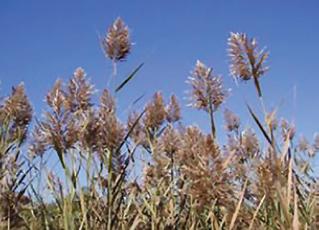
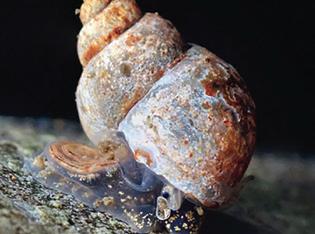
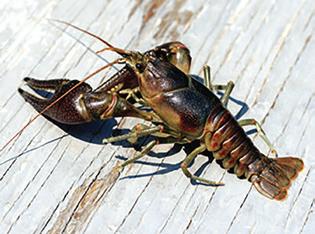
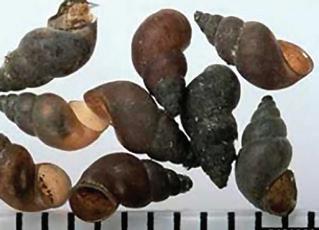

Left: Spiny water flea (Bythotrephes longimanus). Photo: invasivespeciesinfo.gov.
Right: Common reed (Phragmites australis australis). Photo: invasivespeciesinfo.gov.
Left: Flowering rush (Butomus umbellatus). Photo: invasivespeciescentre.ca.
Right: Mud Bithynia or faucet snail (Bithynia tentaculata). Photo: inaturalist.org.
Left: Round goby (Neogobius melanostomus). Photo: invasivespeciescentre.ca.
Right: Rusty crayfish (Faxonius rusticus). Photo: invasivespeciescentre.ca.
Left: Eurasian watermilfoil (Myriophyllum spicatum). Photo: invasivespeciescentre.ca.
Right: New Zealand mud snail (Potamopyrgus antipodarum). Photo: invasivespeciesinfo.gov.
Starry stonewort (Nitellopsis obtusa). Photo: invasivespeciescentre.ca.
Right: Zebra mussel (Dreissena polymorpha). Photo: invasivespeciesinfo.gov.
AIS, and the information does apply to Canadian waters that are shared with our US neighbours, such as Lake of the Woods, Rainy River, and Rainy Lake.
In 2023, the United States Geological Survey, another member of the IMA, published a risk assessment tool for AIS for the Rainy – Lake of the Woods watershed (doi.org/10.3133/ofr20221070). This report flowed from a project championed by the AIS subcommittee, working with the International Rainy – Lake of the Woods Watershed Board, to investigate the AIS of highest concern for our watershed.
The study identified dozens of concerning plant, animal, fish, invertebrate and other species, and ten rose to the surface as the most concerning, based on proximity to the watershed, the ease with which they might be transported or introduced, and the severity of the potential impacts they could have on the ecosystem. These are: Bythotrephes longimanus (spiny waterflea), Faxonius rusticus (rusty crayfish), Neogobius melanostomus (round goby), Dreissena polymorpha (zebra mussel), Bithynia tentaculata (mud Bithynia or faucet snail), Potamopyrgus antipodarum (New Zealand mud snail), Butomus umbellatus (flowering rush), Nitellopsis obtusa (starry stonewort), Myriophyllum spicatum (Eurasian watermilfoil), and Phragmites australis (common reed).
For many of these species, we do not have adequate control or eradication methods once they arrive, so the best chance we’ve got to combat them is to prevent them from ever getting here in the first place. And for that, it’s up to us to be mindful and
responsible not to transport AIS as we move among water bodies.
When it comes to AIS, CLEAN, DRAIN, DRY is the mantra to remember.
CLEAN objects thoroughly before moving any watercraft, trailers, and any water-related equipment (depth finders, flotation devices, toys, etc.) between water bodies. Some AIS, like zebra mussels (which have been reported in Rainy Lake, Shoal Lake and Lake Winnipeg, but not yet in Lake of the Woods) and spiny water fleas (which are in Lake of the Woods but not all lakes in the watershed) are very tenacious hitchhikers and it takes high heat and pressure to remove them. AIS boat wash stations exist at several locations throughout Minnesota, and this year, Grand Council Treaty #3 and LOWDSA have partnered to operate these facilities at popular boat launches around Kenora. If you can’t visit a boat wash station, a car wash can work, too.
DRAIN bilge pumps, baitwells, livewells, and any other water storage compartments and leave the plugs out and hatches open while transporting watercraft.
DRY the object completely to kill any residual hangers-on, which for some AIS, means leaving a vessel to dry for as long as five days. Thoroughly inspect your vessel for unwanted visitors, including plants.
You can also reduce the spread of AIS—and avoid breaking the law—by remembering not to dump your bait into the lake, too. Dispose of unwanted minnows, leeches, worms, etc. in the trash. an

Kenora's new self-storage facility offers 24/7 gate and tenant access with state-of-the-art security. Whether you need to store personal property seasonally, during renovations, or simply for extra space, we provide both long and short-term options to meet your needs.
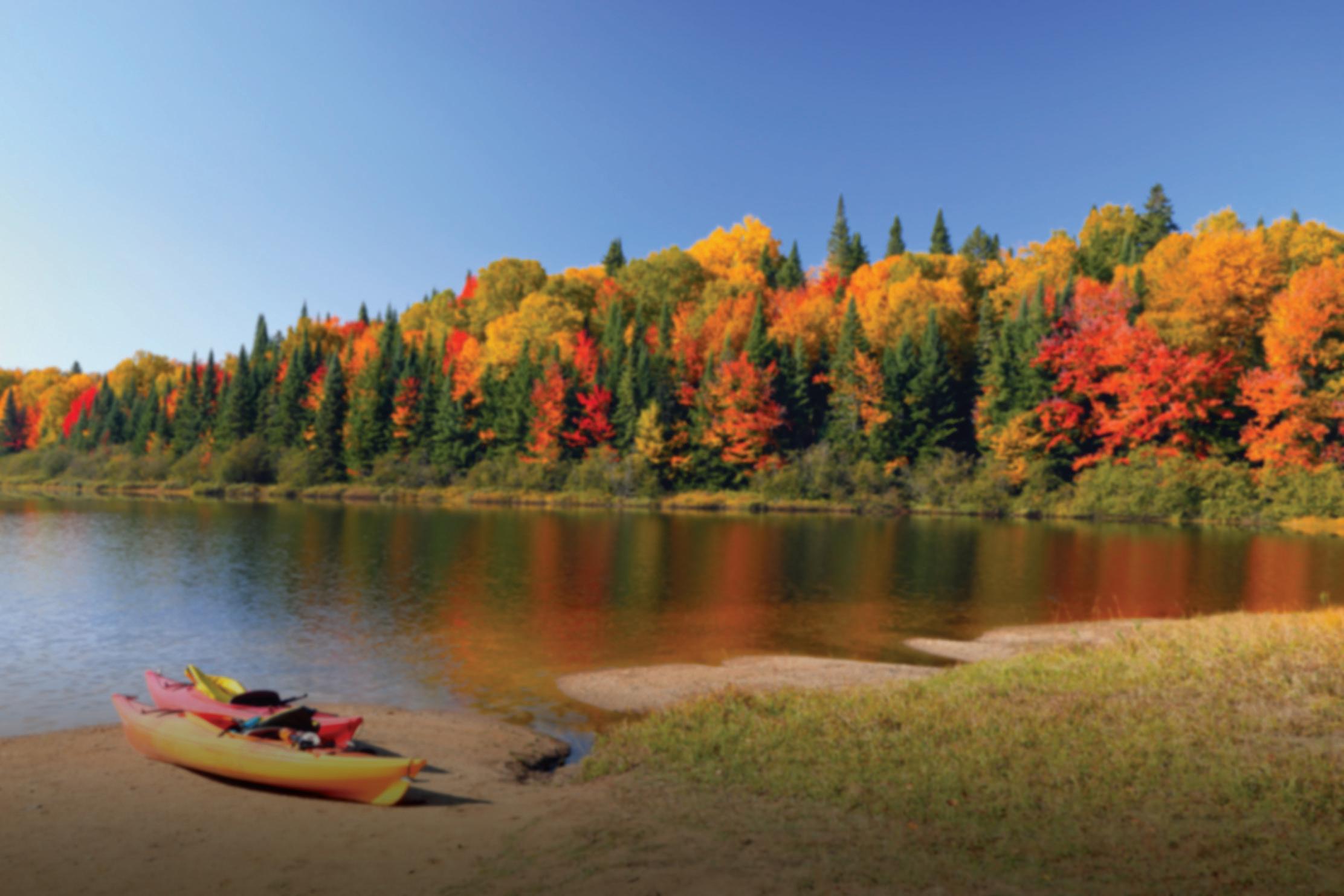





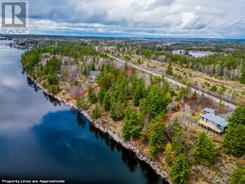


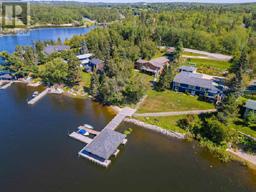







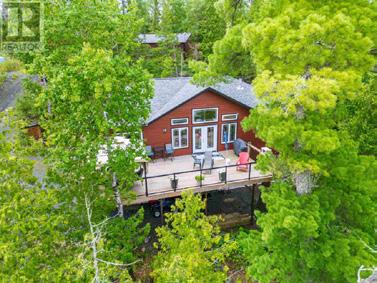
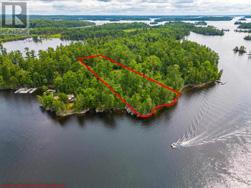
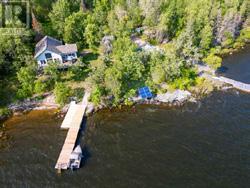
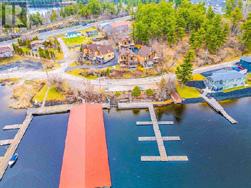




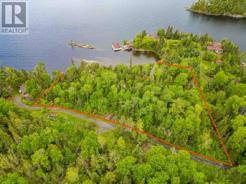
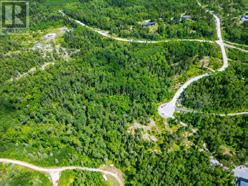





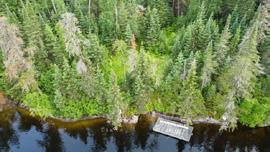




BY LAUREN HAYHURST, FISHERIES RESEARCH BIOLOGIST AND LEE HRENCHUK, SENIOR BIOLOGIST, IISD EXPERIMENTAL LAKES AREA
Why do we use non-invasive fish sampling methods?
Here at IISD Experimental Lakes Area—the world’s freshwater laboratory, just southeast of Kenora—we are monitoring our lakes year-round, trying to figure out the impacts of human activity and pollution on freshwater lakes, from water chemistry to fish.
Traditionally, when evaluating fish health that might be impacted by human activity, scientists collect wild fish and euthanize them. This allows the entire body of the fishes to be analyzed to determine their status and for their tissues to be tested for chemicals, such as mercury, to make sure that they are safe for humans to eat.
Frequent euthanizing of wild fish can, however, reduce population numbers. Scientists want to sample often to keep an eye on the health of populations, but with frequent euthanasia, it can become a problem instead of a solution.
How can we sacrifice as few fish as possible during sampling?
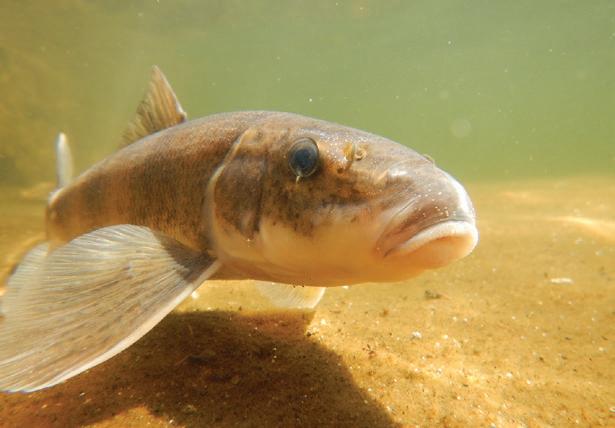
Here are just a few ways:
At IISD Experimental Lakes Area, we primarily use non-lethal fish sampling methods, which allow us to get to know the fish as they live their lives in the experimental lakes. We know that they didn’t ask to live in an experimental lake—we understand what a privilege it is to be able to study these fish in their natural habitat and we know that respecting each fish as a unique individual is essential.
In fact, we are developing new, and championing existing, ways to measure fish health without the need for sacrificing.
Once we have collected fish from the lake and brought them to shore in tubs of fresh water, we anesthetize them and then collect a whole host of information on their health and development, including species, weight, length, sex, and maturity status.
After collecting these measurements, we may use one or more non-lethal methods to collect additional sample(s) from the fish before releasing them back into the lake.
First, we want to identify our large-bodied fish over time.
So much of the monitoring of fish health and populations that we do requires us to track (and use these non-invasive sampling methods on) the same fish over months and years to see how they are getting on and to determine the effects that human activity and pollution may be having on them.
We do this by inserting a tag—just like the ones you use to tag your pet dogs and cats—into the muscle of their back. We can then scan the fish before we start sampling them to determine who is who in our long-term database.
Whenever we insert a PIT tag, we also collect a fin ray to determine its age.
Back in the lab, we count the annual summer (wide growth) and winter (narrow growth) rings to assess the likely age for each fish, just like a tree!
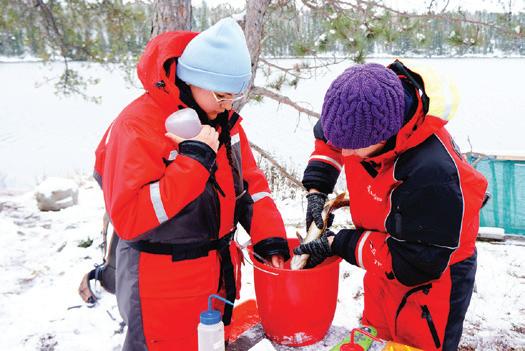
The muscle tissue of a fish contains lots of information about its health, including what it is eating, its contaminant load, and how much energy it is using.
The process involves removing a small core of muscle through a simple biopsy procedure, sealing up the wound, which heals easily, and then analyzing that sample. We sometimes resample the same fish after a year or two.
You might be surprised to learn that the molecules found in fish mucus can reveal everything from how stressed they are to the contaminants they contain.


This process is simple and very non-invasive. We simply swab the side of a fish to capture some of its mucus, put the tip of the swab in a vial, freeze the sample, and then analyze the mucus. We can even return to the same fish later to compare results.
The contents of a fish’s stomach can teach us many things, including a snapshot of what other fish, zooplankton, benthic invertebrates, etc., that fish has been eating.
We do this year-round, which means we can compare seasonal differences in fish diets and note changes that may be a result of the whole-lake manipulation.

The areas that fish occupy in the lake are just as important as how healthy they are, especially when you consider how climate change is affecting the size and location of fish habitats.
After surgically implanting acoustic telemetry tags (or transmitters), information about fish location and depth gets sent to receivers spread around the lake.
Twice a year, we grab those receivers from the lake, download the data, and place them back so we can keep spying on the fish. This helps to reveal their movements and seasonal usage of freshwater habitat when they are not hanging out in our nets awaiting sampling.
For more information about the world’s freshwater laboratory in our very own backyard, visit iisd.org/ela. an
What is your property worth? Carmichael Real Estate has been servicing Buyers and Sellers at all price points for over 24 years in the Kenora and surrounding area. Call me directly for assistance and qualified experience at 807-466-2236.

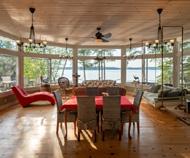
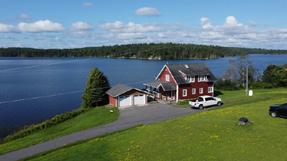

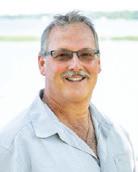

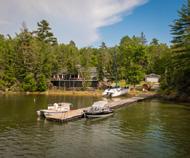

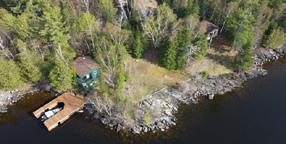
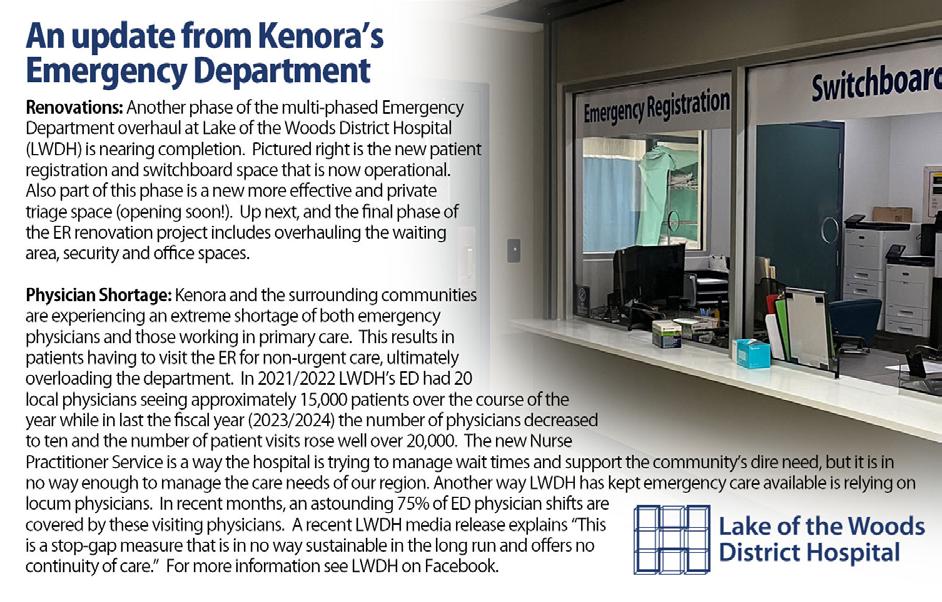
Nature knows best! Human intervention can create imbalance to an otherwise masterful, complex design. Our island home often provided the perfect habitat. Deadfall provides nesting and hiding spots for rabbits and grouse. Standing dead trees can accommodate foraging woodpeckers. Sometimes, however, we can help offset severe conditions such as extreme flooding, or to minimize the impact of our footprint. It is then that building homes for our friends in nature can engage both young and old and help feathery or furry friends. Here are some homes to consider.
Wood ducks have sharp clawed feet, perfect for hanging onto trees. They look for hollow trees or nest box. ‘Jump day’ is one day after hatching. With their mom calling, ducklings leap and glide, sometimes onto water and sometimes on the ground. Wood ducks can jump from a hole dozens of feet from the ground, but it is better to mount the box five to ten feet, so they do not have to fall as far.
The box has a hole approximately four inches in diameter close to the top of the front panel. It can be made of any material but cedar lasts the longest. It should not be painted so it appears natural to its surroundings in the woods. Preferably the opening should face east to offset the prevailing winds and towards the water.
Approximate dimensions: front/back and sides 9 inches wide by 18 inches high. The photo of this duck box that my husband made shows a slightly extended roof cover, a vent at the top, and a simple latch to be able to thoroughly clean the box each season. Audubon International has a more elaborate design at audubon.org/news/how-build-wood-duck-nest-box.
BY CONNIE LARSON

Sorry no photos available but hopefully you can imagine this nifty solution to water levels that can vary immensely on Lake of the Woods—and prove disastrous for our beloved loons.
Our island shoreline could be a welcoming home for the female loon to build her nest close by the water’s edge. Too often however, lake levels change in the spring and we would find her nest flooded and her eggs, once encased by the warmth of her body, now in frigid water. The loon’s legs are positioned far to the rear of their body for best swimming and diving—not equipped for walking long distances on land.
We had some success building a loon raft again, from materials on our island. The raft needs to float on the water so that the nest is six to twelve inches above the water. It should be anchored close to shore and allowed to rise and fall with the water level. Regular check ups are needed. The area should be secluded and not subject to heavy traffic. Loon nests require privacy to have a successful brood. Take heed. Improper placement can put nests more vulnerable to gulls, eagles and wakes or waves from boats that will flood the nest. Rafts can also break loose from shore if not secured properly. Placing the raft as soon as the ice melts is important.

Don’t get discouraged, if loons don’t immediately take to the raft. Continue to keep putting the raft out in the spring and remove in the fall. If you have no loons using it within three years, it is likely not the right location.
Cedar provides the best floating material although it may get waterlogged over multiple uses. Build a platform approximately four feet by four feet, leaving a gap of less than a quarter inch in between for drainage. Attach four cedar logs together for the base and cover with cedar deck planks. All of you know how to chain or attach things to shore if you live on the lake.
A Google search found many photos of similar loon rafts of varying degrees of complexity.
Duck home: Once built ,we watch for who wants a newly built home.
Milled ten-inch accent lumber gave our little cabin a Frank Lloyd Wright appearance. We also added un-barked red pine slabs that acted as a wainscot to the grey stucco exterior. We liked the appearance, and so did the bats.
Bat colonies can exceed 200. They are predators to pests such as mosquitoes—a great asset in the woods around our lake home. We were determined to build them a new home.
There are numerous bat box designs and many bat boxes sold online. The Canadian Wildlife Federation also has a free download and instructions at cwf-fcf.org/ en/explore/bats/bat-house.html.
Some of CWF’s top tips include:
• Use natural woods or non-toxic composites and galvanized screws and nails
• Glues and paint used in construction should also be non-toxic
• If using paint, dark colours absorb heat faster and can make it more comfortable for the bats
• Install roosting grips inside for the bats to hang onto (these can be mesh)
We used what materials we had on the island. Typically, there should be threequarter to one inch roosting chambers, an open bottom, rough surfaces, and vents. There can be a landing pad on the bottom, just a little piece where they can easily land and crawl up into the house. The house should be approximately 50 cm in height and 36 cm wide.
CWF advises that bat houses around this size help keep a more stable temperature and provide more space for a new mother to raise her pups. You may also want to consider building or buying a multi-chamber bat house with passage holes between chambers, since the number of bats that gather in a single roost can vary widely.
While it took a few attempts, we were happy to see our bat’s take residence in their new home. Everybody was happier in the end.

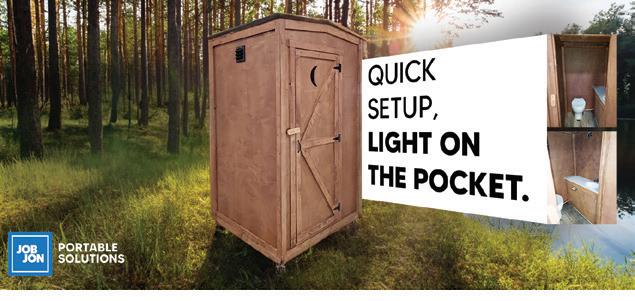



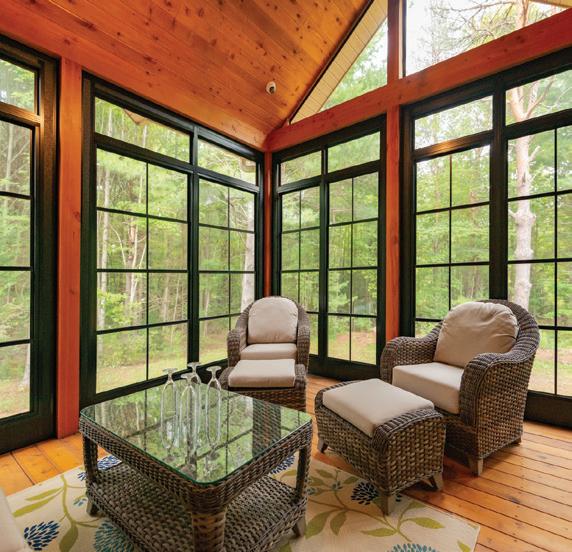
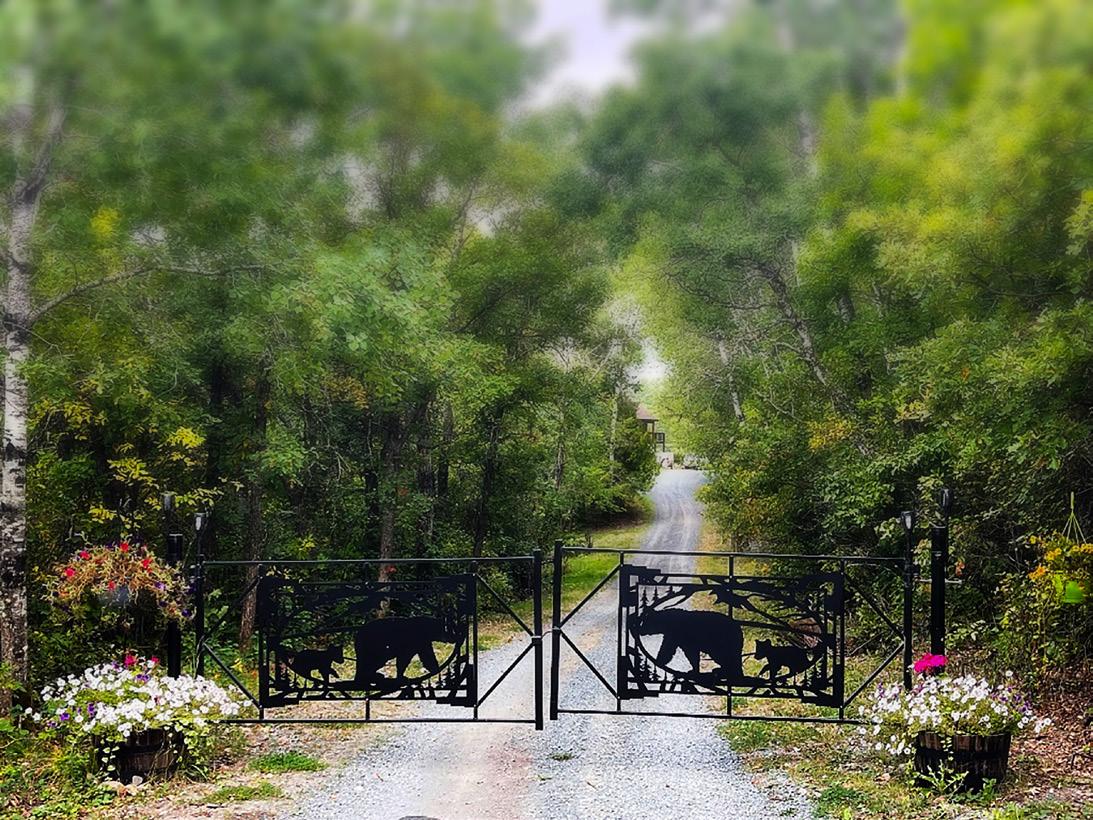
» There is not another property quite like this anywhere on Lake of the Woods.
» Perfect for a corporate retreat or family estate.
» Located on a peninsula, it is like an island EXCEPT you can drive to it!
» Six rental units—including the main lodge. All cabins are up to code and in near perfect condition. Cabins sleep a total of 37 people.
» Building sites for six more cabins. Water, sewer, & electric are already in— ready to start construction.
» Beautiful 2,200 sq. ft. boathouse with bar that seats 12. Slips for 3 boats up to 34 feet long. AND it’s on floats so it’s always the right level—never underwater like most others!
» Being sold totally “turnkey.” All furniture, boats, equipment, tools & supplies included.
» Asking price $3 million, but any reasonable offer will be considered.
» Owner will finance with $600,000 downpayment. Payments only $16,809/mo.
» Owner will pay $4,000/mo ($48,000/year) for a long-term lease back on one cabin. That will cover 25% of the monthly mortgage payment for the entire property.
If you don't want the boathouse, I'll move it & reduce price by $400,000
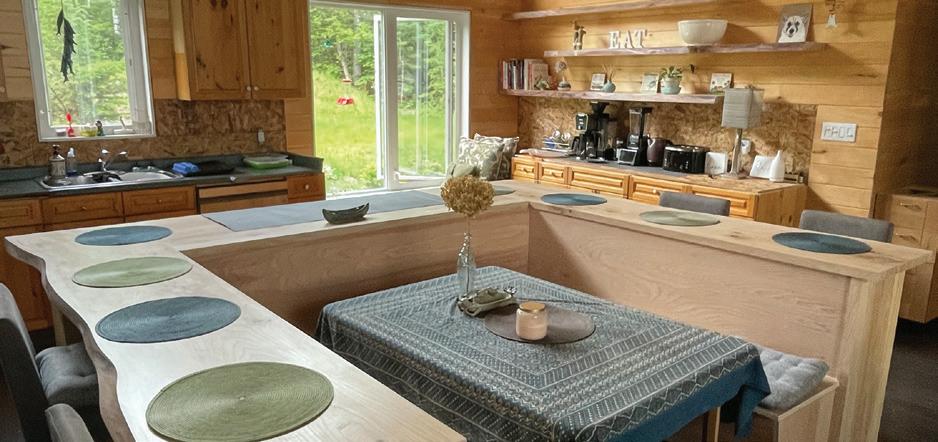
BY MICHAEL FOURNIER
DIY or “do-it-yourself”, is an admirable habit that becomes a necessity when you own a rural vacation or residential property. Leave a secluded place alone for any length of time—the main building, its sheds, its outhouse, its toys—and the elements will notice. Bugs, branches, birds and numerous four-legged beasts who like your palace as much as you do, if not more, whether it’s five or fifty years old, will eventually demand attention. Oh sure, you can ignore it, feign ignorance, exhaustion, not my job, no time, someone else has got to do it, etc. etc.
These chores from the job jar are often lovingly appointed via the “Honey Do List” that assigns ugly activities to the most unwilling person who enjoys the place the most: painting, staining, building, clearing… the list is endless. If you’re the lucky one bestowed the list, maybe some of my experience can help.
I’ve been ‘that guy’.
The DIY reward? Keep the finish line in mind. Fishing, lazing in the hammock, boating, an ice-cold soda, a sunny day on the dock, or just saving money… all can eventually be yours when you do it yourself.
It starts with the right tools. Purchase good tools, avoid too-goodto-be-true priced store brands that may only last a weekend. Many of the top brands have mid-level tools that are better made, have longer lasting batteries and are more capable. If your budget is limited, try yard sales for deals on older tools that have stood the test of time. A good corded electric circular saw is a must. If it’s a tool rarely needed, look to the rental outlets that will rent
that specific tool by the hour, day or week: a cement mixer, a chainsaw, scaffold, even heavy machinery like skid-steers and excavators if the bravado of skill development is in your plan.
Do some research before buying building products. A lumber yard is a bewildering place, but is usually well organized, with lumber outside and things like light bulbs and tools inside. One thing I wish I’d done early on, was take my family through a lumberyard, groan… do we have to?… to chat up the layout. Why? So, when I’m stuck on the roof and that lumberyard item is desperately needed NOW! such a visit may reduce their time looking for that anxiety-invoking item.
Last word on materials: store them with great care, out of the sun, rain and snow to keep lumber straight, siding from discolouring, and hardware from rusting.
More and more, I’m seeing DIY’ers discovering building materials from unusual sources such as building tear-downs, a neighbourhood renovation, scrap trees, the list goes on. Old lumber can be milled into something innovative and new. It’s not an easy process but older recovered materials may offer character, quality, durability and hopefully, reduce cost. When offered, take a close look; how easy is it to salvage, does it have transportation issues, will it require special tools… will you be satisfied with the extra effort? Don’t be fooled. Recovered materials can be a lot more work.

A few years ago, an uncle let me know his neighbour was taking down an old two-storey garage that very week. Upon inspection, I found wondrous 1x10” Douglas Fir—over 20 feet long, which I was unable to salvage—but thankfully, I think someone else did. What I did get was a nice load of 1x8”, 12-to-16-foot Douglas Fir boards and most of the metal roofing on the garage, which I used to build a big woodshed at a very reasonable price.
If you’re wary about operating a tool or performing a mysterious DIY task, build some confidence. Read, or better yet, explore the wealth of human experience of those who have been there done that on the Internet, demonstration videos, online manuals, howto-plans, etc. It’s all out there.
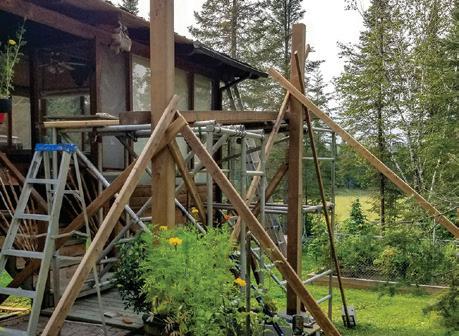
I have to admit, the Internet has opened my mind to help solve the most mundane or complicated DIY tasks, but don’t toss grandpa’s good old home improvement manuals out, as the Internet sometimes fails at the most obsolete of tasks. A flooring job I recently performed was saved with an old school manual—kids, it’s in the will!
Working alone, that’s no fun. Yet your budget may have little cash for a hire, the convenience of friends (beers and food), or the cost of heavy machinery. The task requires help, but the work must go on despite these circumstances. Stop and think about each step… innovate, and build a system that maintains your safety. Working high up or moving heavy object(s) requires a good ladder, maybe a scaffold or the might of a simple and cheap tool, the “come along”. Clamps, ratchet’s, vice grips, dad’s old B&D Workmate®, etc., are all super handy to hold things together.
If you are starting from scratch, building a garage, an addition, upgrading electrical or plumbing, quite possibly it’s time to call a contractor. At this stage municipal zoning, building permits, and various service hookups may come into play that require certified training and experience. Most of this information can usually be found on your municipality’s website or by asking friends and family who have undertaken similar, larger projects.
Staying fit is a constant goal for many of us, but often we attach that activity to a gym, jogging, or walking. Landscaping, construction, and renovating all require a fair amount of physical effort. Embrace that, use it to gain strength, agility, and the power of concentration.
At the end of the day, you’ll not only have built something you’re proud of, but your body will be stronger and have burned every calorie you’ll be enjoying with that divine soda and pizza once the work is done.
Keep the DIY finish line in mind, body and soul. an


Cottages and summer homes are most vulnerable to thieves and subject to damage or vandalism in the off-season—from the week following Thanksgiving to the weeks prior to Victoria Day—especially if the owners are not using them regularly in the fall, winter or spring.
With the Labour Day weekend finished, many cottage and seasonal property owners now begin to consider the closure and winterizing of their properties. The Federation of Ontario Cottagers’ Associations (FOCA) wants to help you protect your investment, year-round.
Remember, the cost of owning a cottage or summer property could include the frustration and irritation of repairing damage and replacing stolen property, if no one is living there or checking it regularly.
If you own a cottage or other rural seasonal property, it’s time to consider the following:
Secure your windows and doors. Close window curtains or blinds and put up shutters to protect the interior from marauders (animal or human).
Leave no valuables at the cottage (electronics, personal items, tools) unless you’re prepared to lose them. Lock up sporting goods that you decide must stay year-round (fishing rods & equipment, water skis, toys). Record the serial numbers of anything of value left behind. Marking your valuables with a drivers’ license number can help deter a thief or aid in property recovery.
Remove all food, and anything that may attract animals. Pack up and take home all alcohol. Don’t leave firearms or weapons at the cottage.
If you are leaving vehicles, boats, ATVs or snow machines, make sure they’re winterized and secure. Leave nothing on trailers unless it is locked or disabled.
Designate a year-round contact or key-holder for: alarms, thefts, weather damage or animal problems.
Make a list of where everything is and make copies. Store one copy on your home computer and put a copy with items that will go back up to the cottage on your next trip.
If you have propane appliances, make sure they are properly shut down.
Drain all water pipes, heaters and fixtures, to avoid freezing.
Defrost and unplug the refrigerator.
Make sure your smoke and carbon monoxide detectors are working properly (replace if necessary) and ensure they have fresh batteries. You should have detectors on all floors and outside all sleeping areas.
Place an open box of baking soda inside the refrigerator to keep odours away.
Scatter moth balls in the attic and anywhere small animals or bugs might gather.
Cover windows with shades for storm protection and theft prevention.
Check your property insurance to ensure the coverage you have in place is adequate and appropriate for your needs.
Organize snow removal if it will be required over the winter.
Know which police force (OPP detachment) patrols your cottage area, and their phone number. Set up a network of neighbours to prevent and detect crime in your area. Know your neighbours, their movements and vehicles, and connect with the local OPP. Watching out for suspicious activity in and around your neighbours’ property can go a long way to lowering the incidence of property crime.
Check your insurance policy or talk to your broker before shutting down for the season. Your insurance company may require you to check on your property at regular intervals or have a monitored alarm system or other requirements.
Turn the heat down (10°C) or off. If you choose to turn the heat off be sure to understand how to drain your water system to prevent pipes from freezing. Turn off the gas supply as well.
Turn off or unplug baseboard heaters.
Unplug any unnecessary appliances, or turn off breakers. Turning the power main off is not a good idea if you have sump pump, exterior lights and/or alarms.
Check for and repair any openings mice, squirrels or other small animals can enter through.
Clean outdoor furniture and move it inside the cottage or a shed.
Inspect/replace damaged shingles on the roof.
Check the caulking around all windows and doors.
Clean out the eaves troughs to allow melting snow to drain properly and inspect all fascia boards.
Leave a spare key and your contact info with someone you trust who can check the cottage regularly.
Cut back trees and dead or damaged branches that overhang your cottage and outbuildings.
Lock all doors and windows. an
BY ROBERT J. CREEDON, FIRE EDUCATION, MINAKI
In cottage country, with all the increases in the fire dangers and forest fires, everyone becomes very conscious of the need to protect their investment. Fire fighters can only do so much, but property owners can take steps to make their investments more resilient to fire with the landscaping they choose. This includes decisions on the type of vegetation and trees, placement and best practices.
It is best to slowly work on this throughout the years and improve it as everything grows and changes. It is also beneficial to do these activities in wet years or the fall in preparation for the next fire season. Most of the vegetation you clear will need to be hauled away or burned to remove it as a fire hazard. This is easiest and safest to do when restrictions are removed in fall or winter. Information about Ontario’s fire season and restrictions is available at ontario.ca/page/forest-fires.
Best practices include looking at your cottage or cabin as the investment to protect. The Immediate Zone of that investment is everything within two metres until clear zone. If you have flower beds or shrubs along the cottage, extend the immediate zone two metres beyond that. Look for hazards and combustibles within that zone, anything that would work as kindling or easily catch fire. Avoid wood or bark chips in your landscaping around the building. Put your firewood and combustible fuels away from the house or cottage and out of this immediate zone. You want as little as possible that can easily catch fire, maximizing that value protection.
The next zone is called the Intermediate Zone and comprises about 2 to 10 metres of space around your cottage. Think of this as the distance of trees falling. It is recommended to have this clear of coniferous trees at minimum and all trees if possible. Coniferous trees are usually dense with combustible needles whereas deciduous trees have natural resiliency once the canopy of moist dark green leaves fills the branches. It is also easier to spot dead areas to be trimmed away. Think of this as your fire break from the surrounding bush. Opening it up will lessen the danger to your property. Well maintained lawns can be your best protection in these areas. You can have shade trees in this area but weigh the risks and choose more fire resistant and resilient types of vegetation.
The last zone is the Extended Zone beyond 10 metres into the surrounding forest. Clearing fallen trees and reducing brush in this area will make it more fire resistant in the future and reduce the hazard. The idea is to lessen the ability of the zone to become a serious threat to your property. As time goes by, forest areas need a burn to clean out this build-up, but regular maintenance will help the forest keep it in check.
We don’t want plants with fine, dry, dead material. Avoid plants with strong aromas as they will contain volatile waxes or oils. Remove those with loose papery bark. Be aware of those that create a lot of dead material. Leaves are a lot easier to clean up and rake than needles. Reducing the buildup yearly can help drastically.
We are looking for moist, supple leaves with low odour as their sap has more water. We want lower amounts of dead wood coming off these plants or easily removed material like leaves. We also want those with low resin or sap. Please avoid any of the more flammable plants within your immediate zone around the cottage and opt for more resistant and resilient plants. Those would be coniferous or less hardy trees, which would have more dead limbs or debris in or under them.
Finally look at Xeriscaping, which is landscaping that considers the water usage and hardiness of plants for your area. Much of this information can be found online. Specifically for the plants, go to firesmartbc.ca/landscaping-hub/fire-resistant-plants.
Landscaping should also consider the wildlife of the area. Do you really need fruits or berries on your property if it will draw in wildlife and create conflicts? We are all aware of what different animals eat so be aware how your choices affect what wildlife might visit your property and create mischief. Beyond damage to your property, animals can increase your fire risk with damaging hoses or reducing the integrity of your fire-resistant materials (wiring, etc.).
Cottages are usually along the water and uphill. This can create stronger winds from off the water to feed the flames as they burn better uphill. Those Intermediate Zones must be cleared of more combustible plants, ideally with larger open areas. This will make value protection by forest firefighters easier as they will be looking to access water when setting up pumps and sprinklers. This will also make it easier for them to get in and out. Such clearing will also simplify setting up your own pumps if you’ve decided to make that investment, and reduce damage to your lines.
Following these suggestions will not guarantee complete safety but will make the jobs of local and Ministry of Natural Resources (MNR) fire fighters easier and more effective in the event of a fire. As owners, you need to balance the natural beauty of your environment with the risks those choices have. In the end, it is your choice and the level of risk you choose to accept but a little bit of awareness of prevention can help you make informed choices for your cottage and investments.
MNR has their signs on the highways and radio announcements on the fire conditions and provide regular updates at ontario.ca/ page/forest-fires. an

Travelers are becoming more aware of how their travel choices may be impacting the environment and communities they visit. Many travel companies are now more conscious of these concerns and are offering sustainable travel options. Here are some tips on how you can tread more wisely when traveling.
BY SHARON GURNEY
The three pillars of sustainable tourism are environmental sustainability, social sustainability, and economic sustainability. The goal is to minimize the negative impacts while maximizing the positive benefits to cultures, communities, the local environment, and the planet over the short and long term. The United Nations defines sustainable tourism as tourism that takes full account of its current and future economic, social, and environmental impacts, addressing the needs of visitors, the industry, the environment, and the host community.
Sustainable travel is a broad-encompassing term, and you are likely to see other narrower descriptors of responsible travel such as ecotourism, nature tourism, or eco-friendly, ethical, community-based, and regenerative travel to name a few. Always research the tour operator to ensure they are truly offering sustainable travel options. Many will have certifications and will openly describe how their travel packages meet sustainability standards and goals.
When planning your next vacation consider adopting as many of these sustainable travel practices as possible. Here are just a few to keep in mind for your next travel adventure:
About eight per cent of the world’s carbon emissions are caused by travel and tourism. Consider these steps to reduce your travel carbon footprint.
• Choose efficient transportation: Cars and planes tend to be the least efficient modes of transportation. When possible, travel by train or bus to cut emissions. Consider active transportation options such as cycling, walking, or busing around town instead of renting a car. If you must rent a car, choose hybrid, electric, or more gas-efficient models.
• Be energy conscious: Do your part to conserve local water and energy resources. Turn off the lights and electronics when not in use. Turn off the air conditioning (AC) when you are out and soak up the warm night breeze instead of using AC. Ensure towels and sheets in your room are not unnecessarily laundered by hanging them up or indicating that you don’t require clean linens every day.
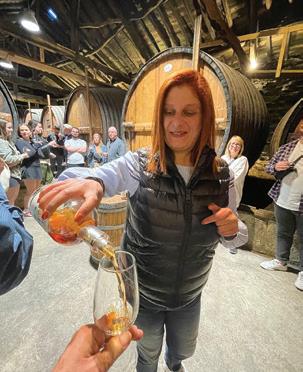


• Find a provider to purchase carbon offsets for projects that reduce carbon and other greenhouse gases. Offsetting is a climate action enables you to compensate for the emissions from your travel, by supporting worthy projects that reduce emissions somewhere else. Some offsets go beyond emissions reductions and help create local jobs, improve waste management, or conserve endangered species and their ecosystems. When offsetting your footprint, just be sure to go through a reputable provider to ensure you’re creating the greatest impact. There are lots of good options, however, the United Nations is a good place to find a project to fund. See offset.climateneutralnow.org/howtooffset.
• Support local conservation efforts: According to Sustainable Tourism International, each year more than eight billion people visit the world’s protected areas, generating about $850 billion in spending. This revenue helps fund conservation efforts as well as provide income to local communities. These protected areas play a critical role in protecting endangered species and preserving biodiversity.
• Be mindful of your tourism footprint: Have fun on your holidays but ensure that ATV or Jet Ski tours aren't harming important natural habitats or disturbing breeding sites.
• Coral Reef protection: If snorkeling in these sensitive habitats, ensure to use reef-safe sunscreen and don’t be tempted to collect shells, leaving them for others to enjoy, and for sea life to use as shelter from predators.
• Get off the beaten path. Many popular destinations are being loved past their sustainability, resulting in overtourism. This often drives up housing prices for local communities and puts stress on local water and waste management services.
• Slow down and immerse yourself. Instead of rushing between destinations, take time to immerse yourself in the local culture, and work to support and learn from local people.
• Support local businesses: Consider staying in locally owned homes and guest houses rather than international chains. Explore local restaurants with locally sourced ingredients. Visit markets to buy from local farmers and artisans. Book tours offered by local guides or learn a new skill from local instructors. If you’re booking a packaged tour, pick an operator that prioritizes local suppliers.
• Demonstrate respect: Learn local history, culture, traditions, and etiquette before arriving. Use Google Translate or other translation tools to communicate in the local language.
By adopting these sustainable travel practices we can help protect and enhance less advantaged communities and critical natural ecosystems. an
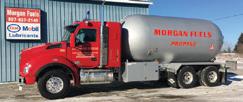




With the temperature dropping, our thoughts turn to preparing our cottages for the cold and snow to come. For some, this means closing up the cottage until the spring. For others, it is a time to prepare for life on the lake during the winter. Regardless, we all do our best to prepare our properties to withstand the toughest weather Canada can throw at us. Some property owners have opted to give their waterfront structures a helping hand, through the installation of bubblers.
For those who are unfamiliar, ‘bubblers’ are a type of de-icing system, intended to prevent the build-up of ice at or around waterfront structures like docks and boathouses. There are several different types of systems, but generally these devices use air or propellers to create zones of agitated and warmer water to prevent ice from forming. Protecting our cottage properties is understandable and an increasing number of cottagers in Ontario are turning to these devices as part of their winter preparation.
However, if you are a regular bubbler user, or if you are considering installing one at your property, it is important to plan carefully and be sure that you are not contributing to a significant hazard on the lake.
Bubblers are often turned on and left largely unattended by property owners throughout the winter. Without careful planning, management and consideration of the nature of your waterfront area, your bubbler can de-ice a significantly larger portion of the water than is necessary to protect your property. This is especially true in shallow or sheltered areas, or when several bubblers are active near one-another, with multiple property owners inadvertently creating a massive hole in the ice, hundreds of feet in size. These holes in the ice can pose a serious safety risk to winter users of our lakes, especially at night or during storms with poor visibility.
Section 263 (1) of the Criminal Code of Canada is very clear that those who make or cause to be made an opening in ice are under a legal duty to guard the opening in a manner adequate to prevent persons from falling in by accident, and adequate to warn them that the opening exists. If you fail to perform these duties, the Code states that you may be found guilty of serious offences, up to and including manslaughter.
If you chose to operate a bubbler to protect your property, please make sure you are taking all steps possible to ensure the safety of all lake users and consider taking these risk management steps:
• Place and angle your devices with care to keep the impacted area as localized as possible;
• Talk to your neighbours to avoid doubling up in an area. It is possible that one bubbler will do the trick.
• Equip your system with a thermostat or timer control. Running 24/7 creates oversized openings.
• Place clear signs near the bubbling area, visible from all directions noting “Danger Open Water”.
• Run an amber light to mark the hazard at night and during storms. Do not use a red light, as this can be mistaken for the brake lights of a snomobile and draw people towards the risk, rather than turn them away.
• Monitor your property. If you cannot be present, have someone check regularly to ensure the system is operating, the effected area is appropriate in size, and that the warning lights and markers remain in place.
• Where possible, a knowledgeable and experienced contractor should be used to configure the system.
Summer or winter, safety on the water is a top priority!
FOCA Members benefit from access to CottageFirst Insurance, a group insurance program designed specifically to meet the needs of cottage owners. The CottageFirst team provides knowledgeable and comprehensive guidance and will create a customized insurance solution specific to you. Cottagers benefit from bundling coverage for their home, watercraft, automobiles and more - all with discounting and coverage enhancements unique to FOCA members. Contact our team today!
www.cottagefirst.com | 1-844-CADE-1ST

BY BRIE MCCARDLE, BLACK STURGEON LAKE
When asked to submit a member recipe I immediately knew the family favourite that stands out in my memory. I’m so pleased to share my mom's authentic Ukrainian Borscht Recipe that I grew up with. This iconic beet soup is served with a dollop of sour cream and rye bread. There’s nothing better as the chill of fall and winter evenings start to set in.
Yield 8 servings.
12 cups beef or pork rib stock
2 cups green or red cabbage, thinly sliced
1 large onion, chopped
2 tbsp olive oil
3 large beets, grated, and chopped beet greens
4 large potatoes, peeled and cubed
1 cup carrots
6 oz canned tomato paste
2 tsp salt
3 bay leaves
1 tbsp white vinegar
Pinch sugar or maple syrup
3 large garlic cloves, grated ground black pepper, to taste
¼ cup dill, finely chopped sour cream and rye bread for serving

• In a large pot add beef bones or pork ribs and cover with water to simmer for 1-2 hours or until tender. Strain to remove the bones. Separate meat from the bone, chop and add back into the pot.
• Return broth to a boil, add cabbage, cover and bring to a boil again. Reduce heat to low and cook for 20 minutes.
• Meanwhile, preheat large skillet on medium heat and swirl 1 tbsp of oil to coat. Add onion, carrots and sauté for 5 minutes, stirring occasionally.
• Add beets and greens, remaining 1 tablespoon of oil, and cook for another 3-4 minutes.
• Transfer sautéed veggies to a pot along with potatoes, tomato paste and salt. Cover, bring to a boil then reduce to on low heat and cook for 20 minutes.
• Turn off heat. Add vinegar, sugar, garlic and pepper. Stir and let borscht sit for 10 minutes to allow flavours to marry. Add dill, stir and adjust any seasonings to taste.
• Serve hot with a dollop of sour cream.

BY DREW MONKMAN & JACOB RODENBURG
Imagine sitting in the snow with no coat or jacket, no boots or shoes, no hat or mittens. You would be freezing within minutes! Insects face this same dilemma. They have to find strategies in order to survive the coming cold of winter. In order to survive the extremes of winter, different kinds of insects have evolved to spend the winter in different stages of their life cycle (e.g., crickets as eggs, woolly bear caterpillars as larvae, swallowtail butterflies as pupae, dragonflies as nymphs and
One of the most interesting overwintering strategies is that of the goldenrod gall fly. Goldenrod is a common wildflower found throughout much of Canada, carpeting fields with a warm yellow glow. As fall progresses and the goldenrod's leaves turn brown and slough off, you may notice small round swellings on its stem. These swellings are the home of the goldenrod gall fly (Eurosta solidaginis) and the start of an amazing story. This is a story that involves feet-tasting, balloon heads and an irritated plant.
Adult flies, brown and mottled in colour, are only about a ¼ inch in size (5 mm) and emerge from their winter home in late spring.
As with most insects, adult life is brief—only about two weeks. However, it gives the goldenrod fly just enough time to find
The female goldenrod fly selects the plant of her choice by “tasting” the stem with special chemical sensors on her feet. She then inserts more than one egg in each stem but only one
A tiny white larva hatches and munches its way into the plant stem, creating a hollow chamber. The saliva of the larva irritates the plant, and it responds by growing a round deformation around the chamber. The larva spends the
In the spring, the larva becomes active again and chews out a tunnel as an escape route, almost to the outer surface of the gall. It then moves back towards the center
The adult emerges from the puparium, wanders down the tunnel and, by inflating a spiny, balloon-like structure on its head, pushes its way out of the gall. And so, begins another life cycle!

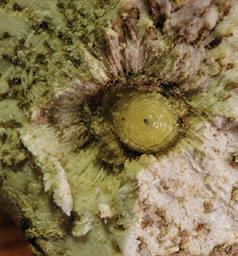
Find a meadow with goldenrods. Look for those round goldenrod galls. If you find one, take a closer look. If you notice a ragged hole in the side of the gall, this means it has been robbed! A chickadee or downy woodpecker has pecked open the gall and eaten the larva inside. When you have found healthy galls, have a parent remove the gall (along with an inch or so of stem) from the plant. You can use scissors or a sharp knife.
Have a parent use the knife to carefully cut into the gall along the stem axis (parallel to the stem), inserting it no more than 1 cm. Twist the knife blade sharply until the gall splits open. Now look for a small white grub (fly larva) inside. You may need to try more than one gall in order to find a healthy grub. Explain once again that the grub will pupate inside the ball in the spring and exit as an adult fly. You can also try putting the grub into a freezer for a couple of hours. When it's frozen, remove it and watch it warm up and start squirming again. Now, how amazing is that!
Allow each child to take a gall home to witness the rest of the life cycle. Place the gall upright in a glass jar with a lid and place the jar in an unheated location like a balcony or garage. Starting in early May, check the jar for signs of life. With luck, you should eventually find an adult goldenrod gall fly in the jar.
Other overwintering insects use this same strategy. Here are some other galls to discover on Goldenrod as winter approaches. Use a magnifying glass or hand lens to get good close look.
• Goldenrod moth gall: Look for these cylindrical (not round) galls on goldenrod. Take a close look at the exit hole. The larva makes a plug to seal off the chamber. It is slightly bevelled, meaning that it is a bit wider along the outside and narrows toward the inside (shaped somewhat like a sink plug). The bevel shape makes it harder for a predator to gain access but easier for the emerging adult moth to pop the plug.
• Goldenrod bunch gall: The tiny goldenrod gall midge (Rhopalomyia solidaginis) lays its egg in a leaf bud of a goldenrod plant. When the egg hatches, the grub somehow stops the stem from growing normally, causing the goldenrod to form a tight, flowerlike cluster of leaves at the top of the stalk. While this bunch gall is unique to the goldenrod gall midge, the dense foliage often becomes home to various arthropods, including spiders and other midges. Because of this, the goldenrod gall midge is sometimes called an "ecosystem engineer."
• Oak apple galls containing larval wasp (apple-like, on oak trees).
• Willow pinecone galls containing larval midge (pinecone-like, on willows).
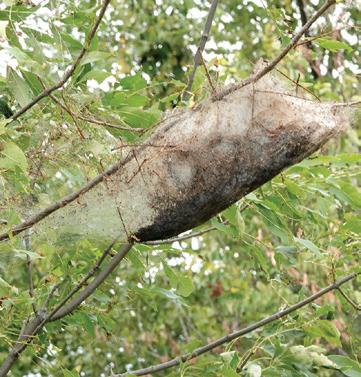
• Tunnels made by bark beetle larvae in logs or tree trunks.
• Ragged fall webworm nests on numerous broad-leaved tree species.
• Empty tent caterpillar nests on cherry trees.
• Tent caterpillar eggs (inside of shiny, brown rings encircling twigs of cherries).
• European mantis eggs in foamy, tan-coloured cases on twigs and stems.
• Cocoons (pupae) such as the 2-inch (5-cm-) long, brown, silken cocoon of the Cecropia moth.
• Insect nymphs and larvae on or under rocks and branches in streams.
• Hibernating adult insects like mourning cloak butterflies and queen wasps nestled under loose bark. an
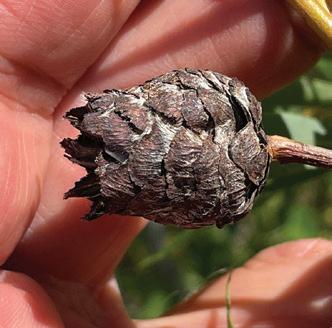

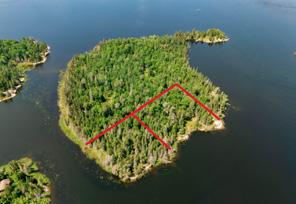
Orde Island, Minaki
2.13 acres with 295 feet east-facing natural shoreline. Water access.
$119,000
2.08 acres with 584 feet east-facing natural shoreline. Water access.
$129,000
Greg Kirby, Re/Max First Choice Realty Ltd 807-466-8266 / gregkirby.ca

14 Island Canyon Lake
Private island on Canyon Lake with a 1200 sq ft renovated cabin and solar system. Perfect for gatherings, the island offers beaches, rock ledges, and a safe dock. Docking area included. Turn-key and ready for enjoyment.
$695,000
RE/MAX NorthWest Realty Brokerage 807-468-4573 / remaxnorthwestrealty.com

Winnipeg River - 61 Peterson Drive
6 bed / 3 1/2 bath year-round home/cottage w many extras including a 5 acre low profile lot & 790 ft. of south facing waterfrontage. Operating as a lucrative Air B&B.
$1,150,000
Shelley Torrie Home & Cottage Realty 807-547-4020 / kenora-realestate.com
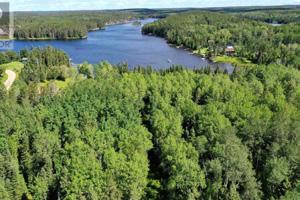
PCL 42102 Austin Lake Road
Ready for a new build! 14+ acre waterfront property on Grassy Lake, 20 minutes from Kenora. Enjoy water activities, and tranquil living. Dock and habitat assessment approved.
$175,000
RE/MAX NorthWest Realty Brokerage 807-468-4573 / remaxnorthwestrealty.com
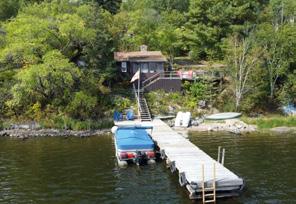
Located on the western side of Beach Road in unorganized territory (low taxes), this 0.8 ac property has 120 ft south facing rocky/sandy frontage. Two self-sufficient small cottages, two bunkie cabins, sheds and a 60 ft long crib dock.
$735,000
Carmichael Real Estate Inc. 807-466-2236 / lakeofthewoods.net
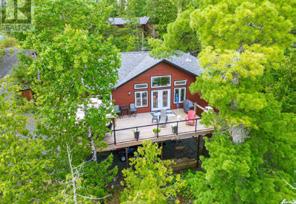
Modern elegance meets serene lakefront living. Custom-built 4-bdrm home on titled land: openconcept design, premium finishes, stunning views of Poplar Bay, and a spacious rec room, just 15 minutes by boat from downtown Kenora.
$1,599,000
Century 21 Northern Choice Realty Ltd. Independently Owned & Operated – Brokerage 807-468-3747 / century21kenora.com
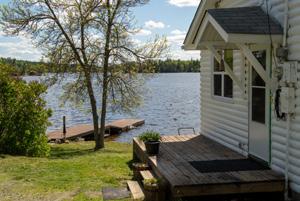
Nestor Falls
Home or cabin on Lake of the Woods. Virtual tour and photos on our website.
$275,000
Northwoods Realty 807-226-1024 / northwoodsrealtyltd.com
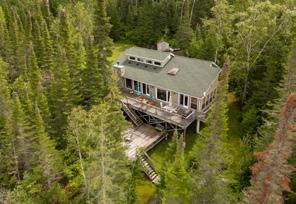
Lot 4 Lily Pad Bay
This professionally built four-season lake front cottage will impress you from the foundation up! File 4651.
$999,000
Cabin Country Realty
807-468-3541 / cabincountry.com

EB1722 Boys Clearwater Bay
This legacy property has never seen the open market and now is the chance to own it! File 4629.
$2,900,000
Cabin Country Realty 807-468-3541 / cabincountry.com
Email membership@lowdsa.com or mail LOWDSA, Box 1160, Kenora, ON P9N 3X7
Next submission deadline: August 9, 2024
Please try to keep your listing to 35 words or less.
Beautiful sunsets on Darlington Bay. Two bedroom cottage, 5 min boat ride from Perch Bay resort or the Winnipeg River public dock in Keewatin. Newer open-concept cottage with beautiful lake views, front deck, BBQ, fire pit and great dock for fishing and swimming. Great cellular service and nice shoreline. Composting toilet and outhouse. One bedroom has a double bed, the second has double bunk beds and single bed. Available Jul 29-Aug 23. $1300/week (minimum 2 weeks preferred). Contact aaronaway2@gmail. com or text 204-230-3372 for more information.
Cabins For Rent on LOTW. Located on a peninsula 7 miles south of Sioux Narrows. Everything is new or nearly new condition. Rates from $199/ day to $899/day. Text 218-310-2200 for photos & more info.
Large, private island in Poplar Bay. Two cottages, bunkhouse, boathouse, & boat slip. Main cottage—extensive decking, spectacular veranda, 3 bedrooms. Second cottage—2 bedrooms, great room, veranda. Contact 204-292-5618 for more information.
Two Private Cottages on Coney Island. Adjacent cottages connected with large 2-tier deck on private bay. Total of 1400+ sf, 4 BR’s, 2 full baths & 2 full kitchens, new fixed and floating dock w/ 300 ft of sand beach just minutes to Kenora marinas. New doors & windows, lightning fast Starlink WIFI, laundry, BBQ. Prefer seasonal rental, will consider 2-week minimum @ $3500/ week. Email CTHaynor@gmail.com. West end of Coney Island…southern exposure facing Cameron Island. Four bedroom camp. New fixed dock and floating dock for lots of boat parking and great swimming. Brand new Septic system. Bathroom has been upgraded and has an outdoor shower. It is an older style camp built in the 50s and 60s. Has a new roof and a new foundation. Interior is ‘retro rustic’. Front deck very close to the water’s edge. Low profile with only a dozen steps up from the dock. Beautiful back yard, great for volleyball and badminton. There is a wood-burning fireplace and a gas BBQ on a back deck. The CampComm satellite internet system is installed and can be reconnected. Minimum 2 week stay. $2,400 per week. Email inquiries re longer stays and rates to regal2750@gmail.com. Lakefront Cottage – Clearwater Bay. South exposure, private, road access, (4) bedroom cottage on 6 acres. Steam room / locker room on the lower level and media room. (4) bathrooms, including (2) ensuite for the primary bedrooms, steam shower in primary bedroom. Kitchen, dining and living room that opens onto a (3) season enclosed porch with opening windows. Laundry room. Multiple decks, including a barbecue deck. Boathouse with plenty of dock and swimming space and ample room for docking boat(s). Starlink wi-fi. 2 minutes off Highway 1 and 15 minutes to Kenora. Sept available dates. $5000/wk, peak season. Contact: jhill@edgemontathletic.ca
Looking for a full season rental on LOTW?
Seasonal rental available for summer of 2024. We are offering a 2 bedroom 1.5 bathroom water access cottage in the Welcome Channel area. Fully furnished and equipped. Starlink internet and Shaw satellite TV. Protected bay and boathouse. Plenty of docking. 10 minutes from Kenora. Available May long weekend through to Sep 15th. Contact for more information, pics or in person viewing. Email: quietchannelcabin@gmail.com or Text 807 407 3001
Road Access Clearwater Bay Cottage. Drive up to the door and you're just steps away from the lake. Recently updated 4-bedroom, two-bathroom cottage, including master ensuite. Lakefront cottage with southern exposure. Beautiful three season screened-in/heated veranda, east and west facing docks, with dock slip available. Wifi, full kitchen, woodstove, and BBQ. Minutes from liquor and convenience stores. Available to rent May, Jun and Sep $2500 per week. For more information and or photos email burmaroadrental@gmail.com.
Quiet Cozy Get Away on Island Property. Cozy
2 bedroom cottage on Shragges Island, LOTW. This property is lake access only so guests will need their own transportation. Enjoy a private dock with boat parking for two boats and sauna, lots of trees for privacy, a big deck looking out on protected Quiet Bay. Bedroom 1 has a double/ single bunkbed. Bedroom two is a loft with a Queen Bed. There is a screen room for eating outdoors bug free, an outdoor BBQ, indoor kitchen and bathroom. We rent Friday to Friday in the summer for $1750 a week. This rental is suitable for 2 couples or a family of 5 people maximum. We ask for no parties or pets. Please contact Karla at 8074644088 or email karlajoytreadway@gmail. com to secure your week this summer. Island rental near Kenora. A modern two-bedroom with a sunroom that could be a third bedroom also has a pull-out sofa in the living room. It also comes with a one-room guest cottage. Comes with satellite TV, good cell service also BBQ on a large deck. It also includes 2 kayaks and a canoe. must have own boat or boat rental, and also comes with a parking spot in Kenora. Available for one week during the first three weeks of Jul or the last 3 weeks of Aug. Composting toilet knowledge would be helpful.
$1350/ wk. Ph. 204 888-4839
Lakefront - Clearwater Bay. South exposure; road access; spacious docks for swimming, fishing & boating. Large great room, kitchen & dining areas with spectacular lake view. 3 bedrooms; master with ensuite. Full second bathroom—shower & bath. Den with fireplace, satellite TV & pullout sofa. Dishwasher, microwave, washer & dryer. Large deck & BBQ. Minutes from the liquor store, gas & groceries. 1-2 week stays, Jun-Sep $4000/w. Contact dougpeever1955@ gmail.com for booking details.
LOW Storm Bay Rd 9. Large house with 9 bdrms, hot tub, multi level decks, granite kitchen, boathouse, sauna, WiFi, fireplace, washer & dryer, dishwasher. Kayak & boat are a possibility. $2500-$7000 weekly. Discounts available in the fall. mail@markmcgregor.ch
Island rental Storm Bay Rd. near the rollers. 2 log homes, new mattresses, 1 king, 1 king, a double and a single. 2 kayaks & a boat can be included. $200-$375 per night. kaitlyn.mcgregor@gmail.com
Brule Point lakefront 3 bedroom cabin, LOW. Fantastic fishing area, quiet bay, two docking facilities with plug, private beach, fully stocked including freezer, large deck. Cabin sleeps 5, single bathroom/shower. Boat access only. 2024 rate $1390/week. Contact donna@taketwoinc.com.
Exceptional location on Coney Island. Minutes from Kenora / Keewatin with western exposure. Newer, open concept cottage with 4 large bdrms and three bathrooms. Separate master suite with bathroom and private deck. Amenities include a full kitchen with all appliances, dishwasher, microwave, washer/dryer, large island, separate dining area, wood burning fireplace and satellite TV. Screened porch with large wrap around decks overlook the lake, outdoor shower and built-in gas barbecue. Waters edge has a large main dock with two floaters that provide deep water docking and great swimming. Minimum 2 week stay. Email inquiries to bill.ralph@shaw.ca
Lakefront on Trout Lake. 20km north of Kenora. 2 or 3 bdrm cabin available for rent weekends or weekly May-Jun. Full kitchen & bathrm, TV/ DVD, BBQ. Comes with canoe, kayaks & 12 ft. alum. boat. Deck off front of cabin; private deck at water’s edge; your own sand beach. Spring fed lake with crystal clear water. troutlake596@gmail.com
Lakefront Cottage on LOTW. Storm Bay Rd, road access. Includes 3 bedrooms, full kitchen, bath and laundry. 2 acres, private bay, sandy beach, floating dock and good fishing! Available Jun, Jul, Aug. $2,500/week. Text 204-951-5812. Lakefront Cottage, near Welcome Channel. South exposure, water access. 5 miles from Kenora by boat. Private dock, hydro, Starlink internet, TV & DVD player, full kitchen w/ dishwasher & 3 pc. bathroom, additional outdoor shower, washer & dryer, bbq, screened porch, 2 bedrooms. Available Jun – Sep. Monthly, Seasonal rental
Note that they are posted within a couple days of submission and not subject to magazine deadlines.
contact lowcottage@hotmail.com. Rustic 1000 square foot cabin on Zigzag Island (Clearwater Bay). 5-minute boat ride from Rockeries Marina. A boat rental could be available. Amazing fishing nearby. Satellite TV, great cellular coverage, bbq, kayaks, fire pit, and much more. Prefer a couple or former cottage owners. Knowledge of a composting toilet is essential. 1300$ per week. 204-688-7347.
Lakefront Cottage for Rent - Locke Bay. Road access 15 minutes North West of Kenora. Built in 2017 with 2 bedrooms and 1 bathroom. South exposure with private dock. Fully furnished. Includes Satellite TV, Internet, A/C, BBQ and fire pit. Would prefer a seasonal rental May - Sep $22,000 or $2000 week (2 week min). Email kenoracottage@hotmail.com for more info.
Lot 20 Shoal Lake, road access. 2900sq. ft. lakehouse, 5 bedroom, 2.5 bath, pine ceilings elm flooring, granite waterfall counters, 2 screen rooms, 2 fireplaces (wood burning), well softener and water purification system. 75 ft. composite deck, cedar gazebo @water,dbl.boathouse. Many more features. 204-668-7185 or 807-700-1581.
Camp/Estate For Sale on LOTW. Located on a peninsula 7 miles south of Sioux Narrows. It is like an island, except you can drive to it. Everything is new or nearly new condition. Could be a camp but would be PERFECT as a Family Estate or Corporate Retreat. Asking price $3 million or best offer. Owner will finance. Text 218-310-2200 for photos & more info.
Rush Bay road access, three bedroom two bath cottage. On one acre, one mile from landing. Bunkhouse, double boathouse with rooftop patio, tool shed, floating docks, front, back decks. Info at rushbay2@gmail.com.
Golf Course Bay, LOTW. For sale by original owner, 3200 sq. ft. 2 story A/C home, 2.5 stall garage with heated workshop, on 2 lots with sand beach, dock, covered boat lift, municipal water & sewer, natural gas heat, paved driveway, many other features. Phone (807) 468-8770.
Part-Time, General Labourer. For help around the cottage and land, possibly 3 days a week. Location: Northern Harbour area at the end of Storm Bay Road. Contact E-mail: peterzaj@mymts.net.
Young Chang 6ft.10in. G208 semi concert grand piano in excellent condition. Enhance the sound and visual aesthetics of your home or cottage with this beautiful instrument Asking price: $14,000. Call 807 407 5891.
PORT A DOCK Aluminum Boat Lift. $4,000. 58” vertical lift, 4000 lb. capacity, electric or manual. Located in Echo Bay, LOTW, Rush Bay Rd. Contact echobay@bell.net or call 807-733-2187.
“Find Your Voice.” One-on-one painting lessons designed to your interests. I have over forty years experience teaching all ages. Supplies are included. I teach traditional techniques and how to blend them. Contact, pippij69@gmail.com.
Duo-Therm oil heater. 17"W x 21"D x 34"T.
Asking $150. Ted 204-294-4891
8ft of 6" SS chimney. Complete with interior box, roof pieces & hat, asking $550. Ted 204-294-4891 13'8" fiberglass kayak. Very light, no leaks. Comes with paddle & cockpit cover. Asking $550 Ted 204-294-4891
JetSki/SeaDoo Floating Dock. Used floating dock for sale. Available for pick up in the Kenora area (Coney Island). Large size (XL6). It weighs 375 lbs and can handle 2,000 lbs. New ones run, with tax about $4,000+. Includes mounting hardware. Priced at $2,500. Contact dmoll@shaw.ca or call 204-391-4580.
Exquisite high-end antiques for sale. These include a 9-piece walnut dining set, ladies spinet desk, roll top desk and swivel chair, carved curio
cabinet with two curved beveled glass doors and matching grandfather clock from Austria, walnut cabinet with beautiful hand-carved panels in the doors from Belgium, and Dresden candelabras. Excellent condition. Prices negotiable. Must be able to take away. For more information and pictures call or text 807-465-4555.
Water Line and Pump System. Rona Franklin Electric submersible water pump, Well Rite flexcon pressure tank and pressure switch, 280' of 1" water line with electrical cable attached. Perfect for lake front cottage. $700.00. Please text David at 204-479-3146.
10x10 old log shed. 14" overhang. The bottom has some rot but if someone is interested in dismantling and moving it to a new foundation it would be a very cool garden shed or playhouse for kids. We'd just love to see it repurposed as it is pretty cool. Dismantling/PU at Trinity Bay (boat access only) Email mridgen@aptn.ca. Boat Rail System, Morson area. Approx. 100 ft. long with carriage for 17’ to 20’ boat (more or less) complete with winch system powered by a solar panel with charging system not including battery. Asking $3750. jaslaw1@shaw.ca.
Snow Blower or Garden Tractor. Looking to buy a good condition, used, gas powered 30 inch or larger, with Snow-Thrower attachment and or Blade. Contact: peterzaj@mymts.net
Pre-owned boat trailer. For 17 1/2' Lund aluminum boat with 50 hp tiller motor; prefer 13" tires although not mandatory. Bunk or rollers. Contact 204-782-2808 or email jim.coldwell@mymts.net.
JY15 Sailboat, good condition. $2,400. Ph/Text: 204-781-6807.
Pontoon Boat, best used a barge. 8x23 deck, 30 hp Johnson long shaft electric start. Needs new plywood floor. Located on Roughrock Lake north of Minaki. $2500.00. Terry at 204-781-1412 or tjames4@shaw.ca.
19.5 StarCraft, Sportcraft, deck boat. 150 E-Tech motor, boathouse stored, less than 30 hours, g.p.s., Trailer. 204-668-7185 or 807-700-1581. 2003 Glastron SX175. Asking $8,500, Volvo Penta 3.0L Engine. Hull and engine in GREAT condition. No trailer. Contact: 204-296-6427 . 16’ Alumacraft runabout. w/25HP Yamaha outboard, Shorelander trailer, Minnkota trolling motor, live well, new LowranceHook 9” fishfinder, new custom cover. Marina stored/maintained. Used max 2 weeks/year. Available 10 Jul. 13K US$. 209-743-4172.
FIREBALL. An original mahogany fireball sailboat, lovingly restored, comes with one brand new set of sails and one original set plus spinnaker, freshly painted and ready to tear across your lake, trailer included, $1500. Email: mactuck@ shaw.ca for google drive link to view photos. 1984 Tiara 31’ Lake Cruiser - Live aboard. Low-time Twin 350 Crusader engines, all new interior refresh with XM and loads of equipment. This ex-Great Lakes boat is ready to go. Contact at 204-292-3970.
Looking for Services or Clients on the Lake? ServiceLinker connects service providers and potential clients via text messages for free. Currently piloting in Kenora and the Lake of the Woods area with over 20 providers already on board, connecting to services like cleaning help or lawn care has never been simpler. Just text "Hi" toll-free to +1 844 360 5465 to find or offer services. No apps, data, or sign-ups needed. For more information, visit servicelinker.net or try it now. LOVE DOGS? It's A Dog's Life needs foster and forever homes for their rescue dogs. Cottagers can help with short or long term fostering or adopting. Website: adogslife.cc or call 807-467-3647.











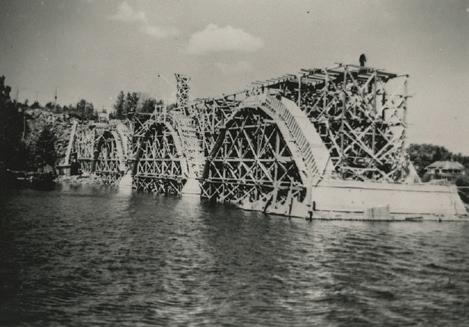
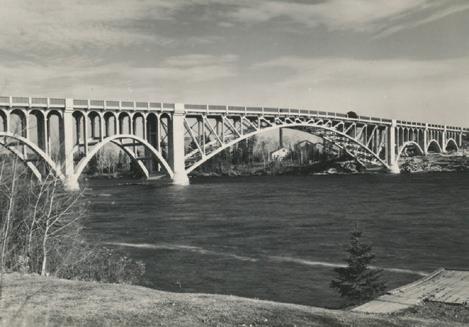
BY LORI NELSON
The Keewatin Bridges is one of the most picturesque landmarks on Lake of the Woods.
It’s a gateway into the Keewatin “harbour”, it’s a place marker to locate where you are when approaching from the southwest, and it’s just so darn beautiful!
Besides its importance for locals, it’s an essential piece of infrastructure linking eastern and western Canada. And so, its story begins…
In the 1910s as the sale of automobiles increased and roadways were being built to accommodate the growing traffic, the idea of a national network of highways was being championed by the Canadian Highway Association. The federal government was onside but because road construction falls under the purview of the provinces, the feds were careful how far they stepped in. Their contributions were to set road standards and provide a portion of the funding.
In 1920, the Ontario provincial highway network was established by the then Department of Public Highways. Roads in southern Ontario were linked, where possible, creating a portion of Highway 17. That network extended to northern Ontario in 1924 when a roadway between Nipigon and Thunder Bay was completed. By 1931, work was underway on the link between Thunder Bay and Winnipeg. It took four years to complete and was opened on July 1, 1935.
At that time, the highway through this area took a mainland route through Norman and Keewatin. But Mayor Jack Allan of Keewatin and his council advocated for a bridge to be built, linking the points of land that mark the entrance to Portage Bay. This route would be shorter, more direct and would also avoid the two railway crossings of the existing route. Their bid for a bridge was successful.
The arch bridge, designed by bridge engineer Archie Crealock, was to be 900 feet in length and 30 feet wide with a five-foot-wide sidewalk. The centre span would measure 325 feet and rise to a height of 50 feet above the channel. It was flanked on either side by three smaller concrete arches. A concrete deck, steel railings and ornamental lamps were all part of the design.
The contract was awarded to Rayner Construction Ltd. in August 1937, and it was estimated that the laying of the foundation, the building of the coffer dam and the bridge construction would take one year to complete at a cost of $300,000 (later reports suggest that the construction was closer to $500,000). The bridge fabrication was done by the Dominion Bridge Co. of Toronto. It was a huge undertaking and it’s estimated that, at one time, 130 men were employed in the construction.
On September 20, 1938, the Keewatin Bridge was opened with great ceremony. Kenora’s MPP Peter Heenan was given the honour of cutting the 36-foot red ribbon. Automobiles bearing the mayors of Kenora and Keewatin passed one another on the centre span to mark the new connection between the two communities. Federal, provincial and municipal dignitaries were present, and it’s estimated that more than 3,000 people attended, including school children as a school holiday was declared for the day. The bridge opened the following spring for vehicular traffic.
Superlatives of the bridge—“the finest this side of Toronto”; “one of the most attractive highway bridges ever built in Ontario”; “the longest bridge on Highway 17”—cemented its importance as a Trans Canada Highway (TCH) landmark. And while it affords a spectacular “first” view of Lake of the Woods as one comes in from the west along the TCH, an equally compelling view of it graces the lakescape as one approaches Keewatin from the south. It’s a beauty! an



